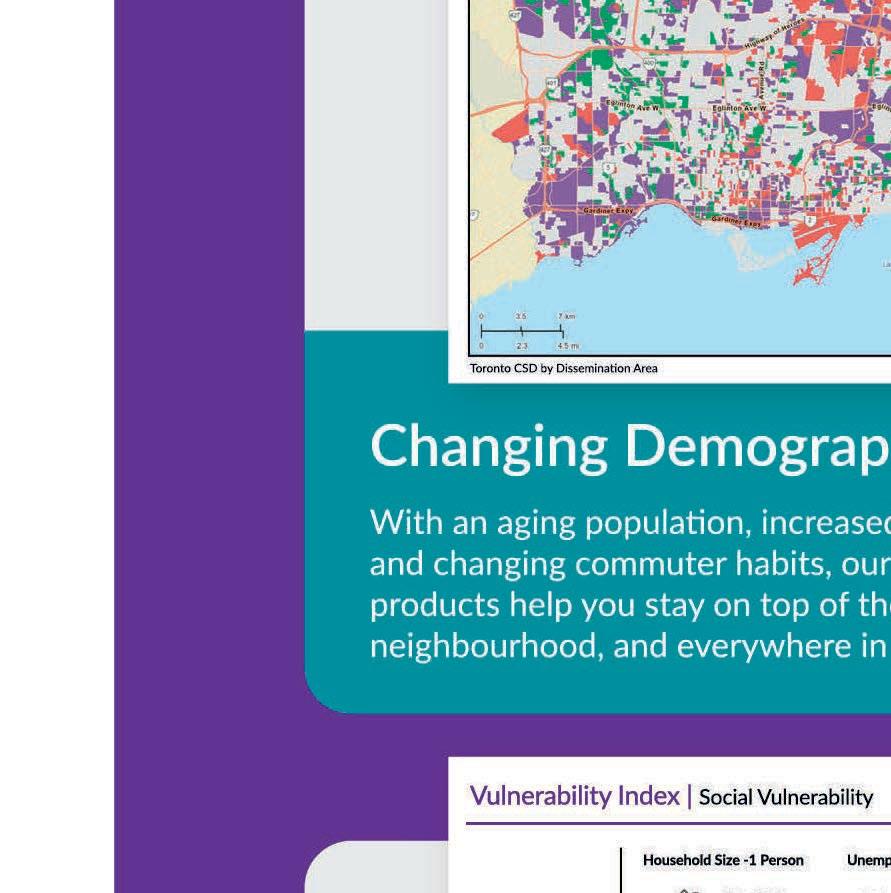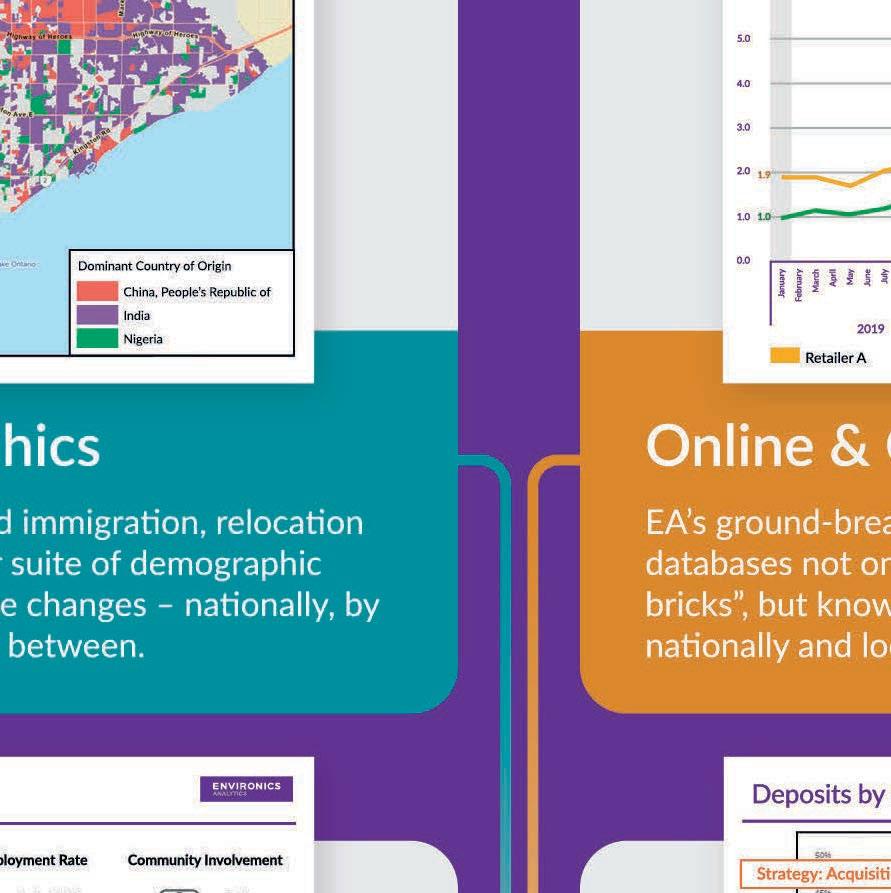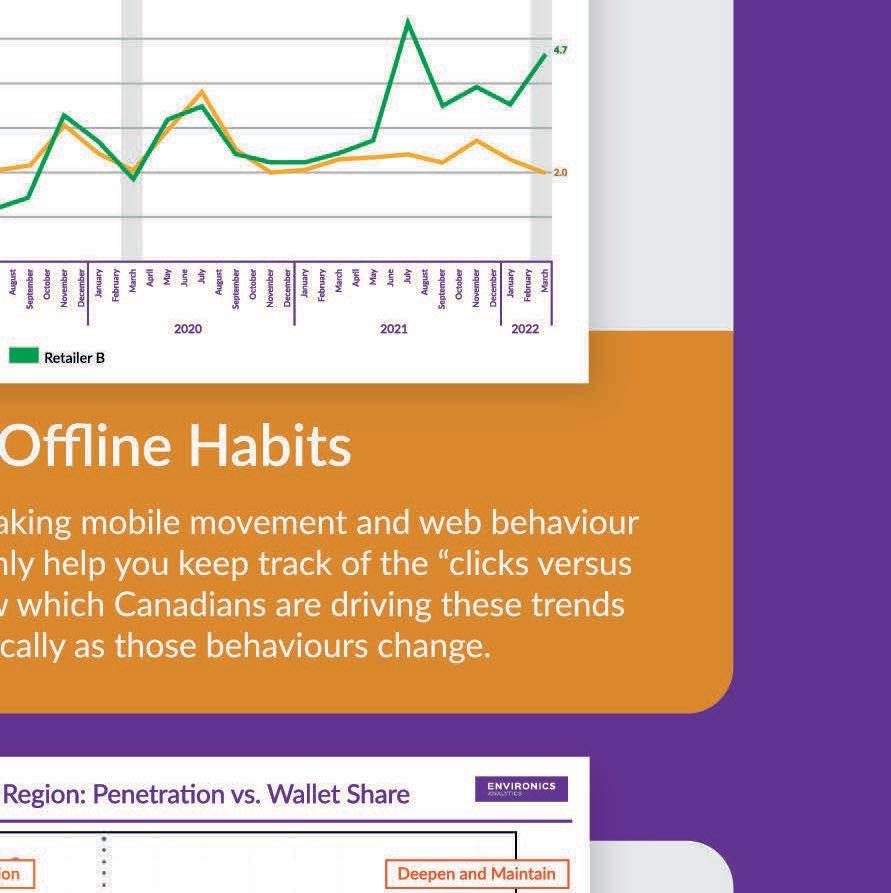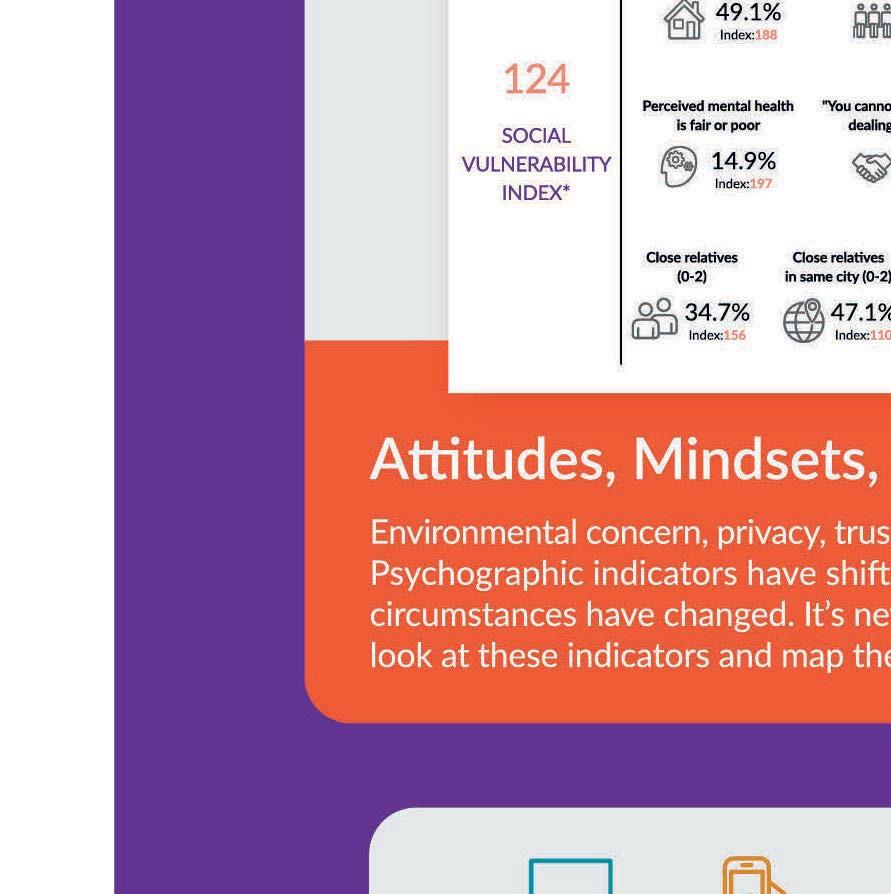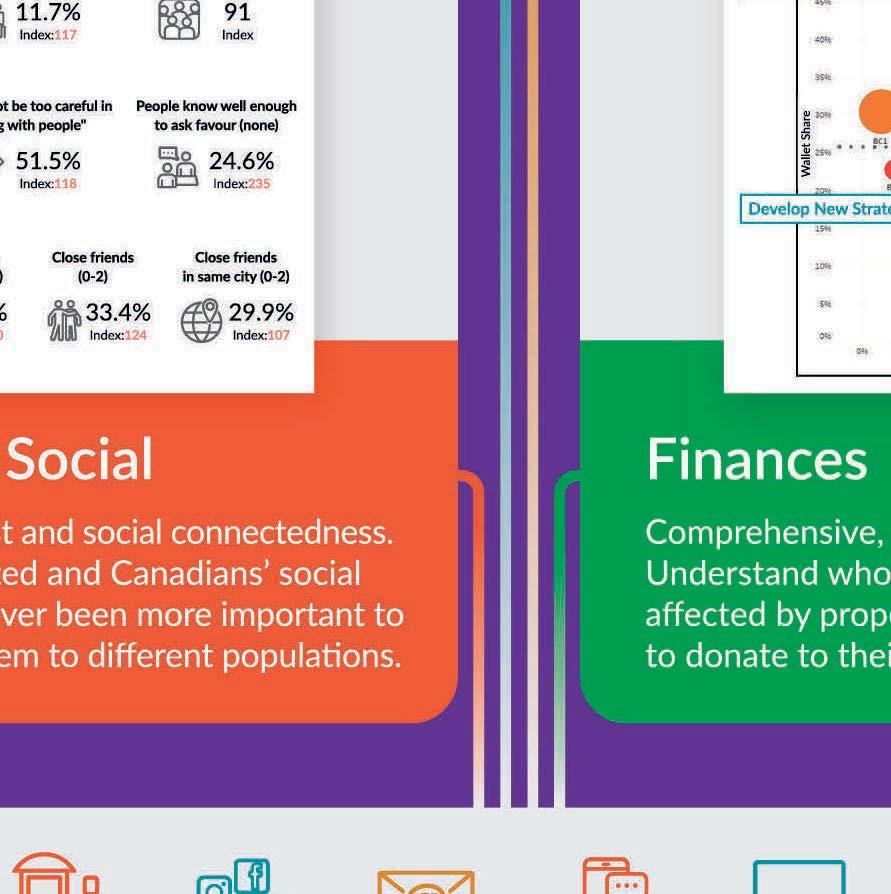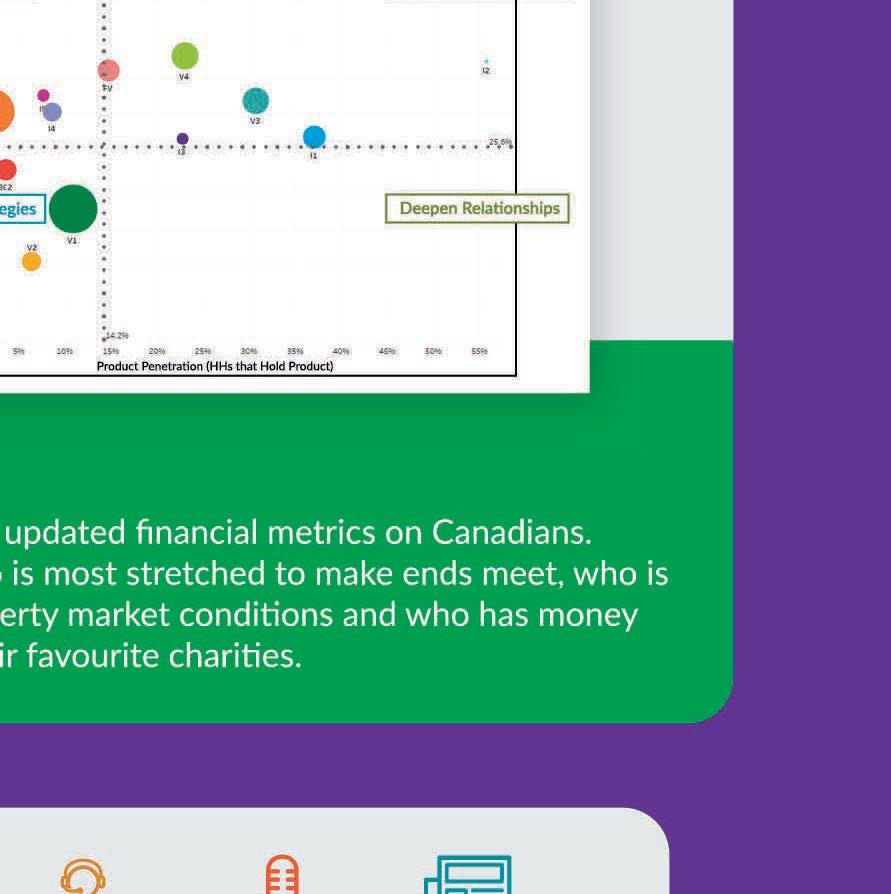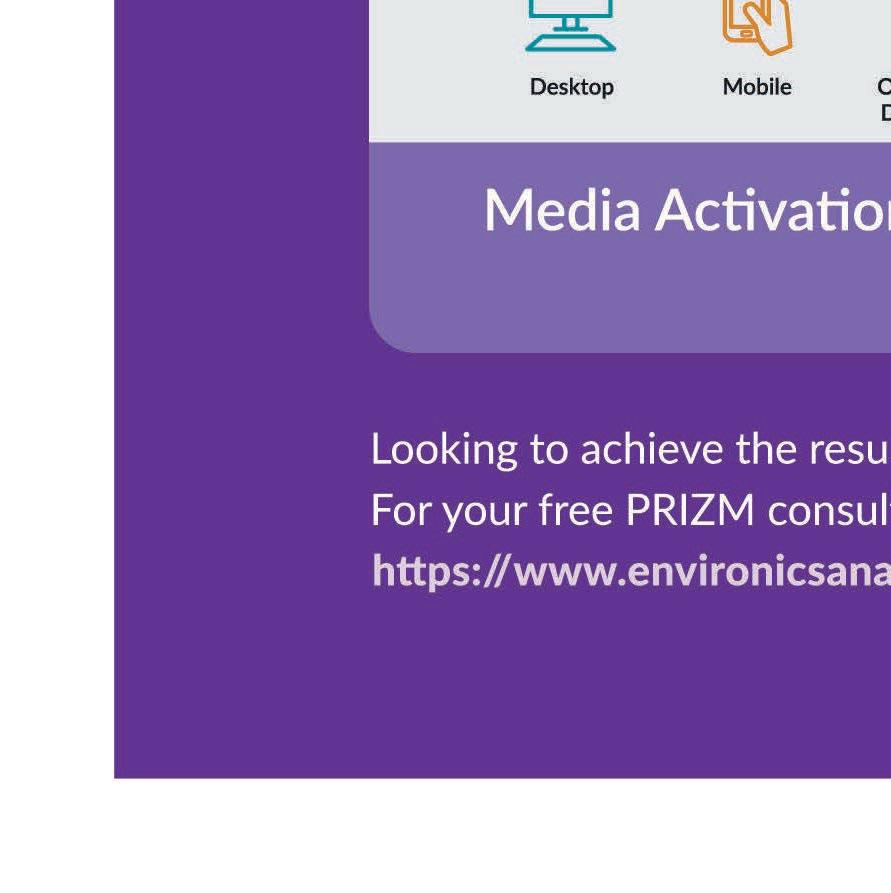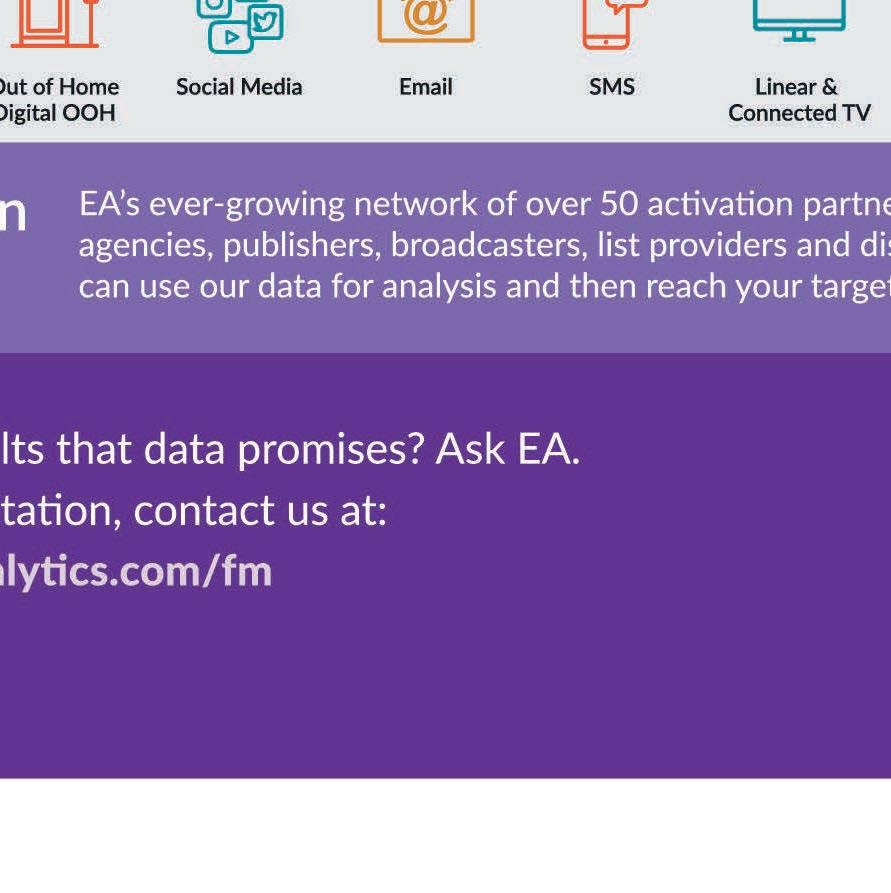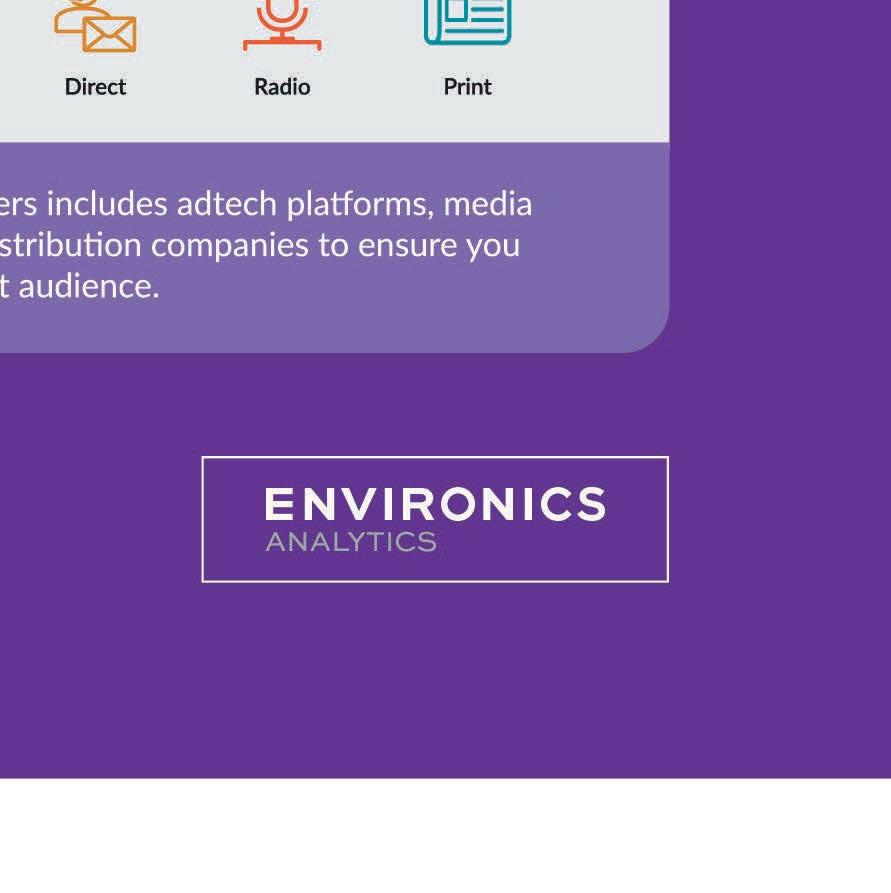
Help You Keep It Clean




The Happy Community Initiative is Aruba’s visitor charity program, supporting the Aruban youth with after school programs, mentorship activities and social support.
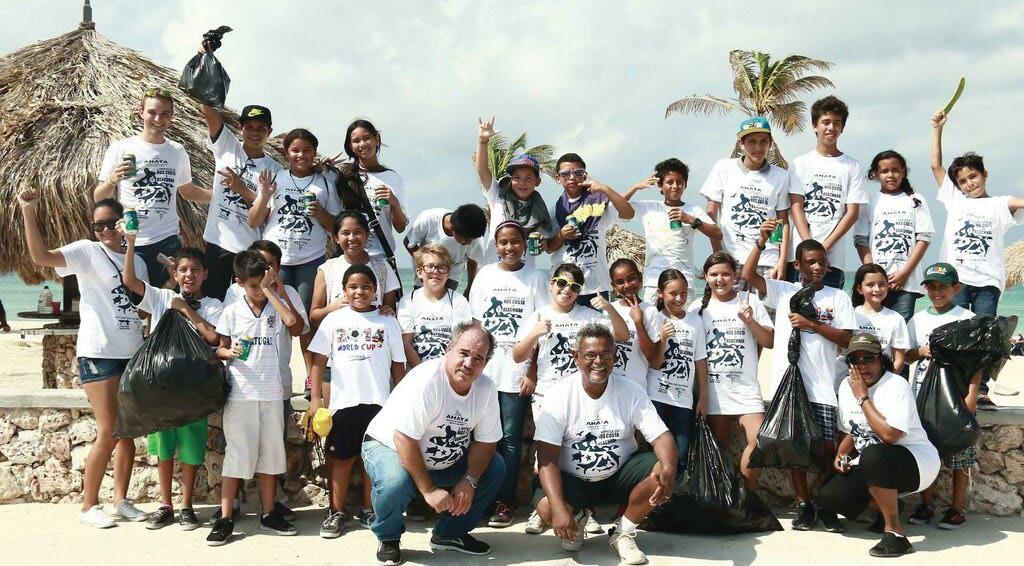
Join us in protecting our beautiful island and promoting the welfare of our animals by volunteering while on vacation.
Turning your stay on Aruba into a volunteer vacation gives you the chance to pitch in and make a difference. You’re guaranteed to return home happy knowing you left the island a better place.
While vacationing in Aruba, you can form a stronger bond with the One Happy Island by helping to preserve it! Join us in protecting the beauty and health of Aruba’s beaches, live reefs, and island wildlife by signing up for one of our incredible volunteer vacation packages.
A donation to the happy community initiative will support local non-profit projects, helping local youngsters improve academic performance, enhance social skills, explore enriching activities in the arts, sports, leadership, volunteer work and more. In addition, your donation will support youth at risk programs that provide training and career opportunities for those whom did not finish secondary school.
CEDE Aruba will make sure that 100% of the donations reach meaningful projects of local non-profits and will check upon quality and transparent finances of the offered programs. This way every visitor can be assured that the donations will hit its goal.

Volunteers from Turtugaruba devote many hours to educating the community, as well as watching over and protecting the nests during the season.
Mother Nature is a busy lady on Aruba these days, overseeing the nests currently being laid this season. All sea turtles are endangered worldwide, and Aruba’s shores have become a favorite nesting place for the Leatherback, Hawksbill, Green, and Loggerhead species. Fundashon Turtugaruba, established in 2003 and a member of the Wider Caribbean Sea Turtle Conservation Network, is the local foundation that protects the four endangered species of sea turtles nesting on Aruba.
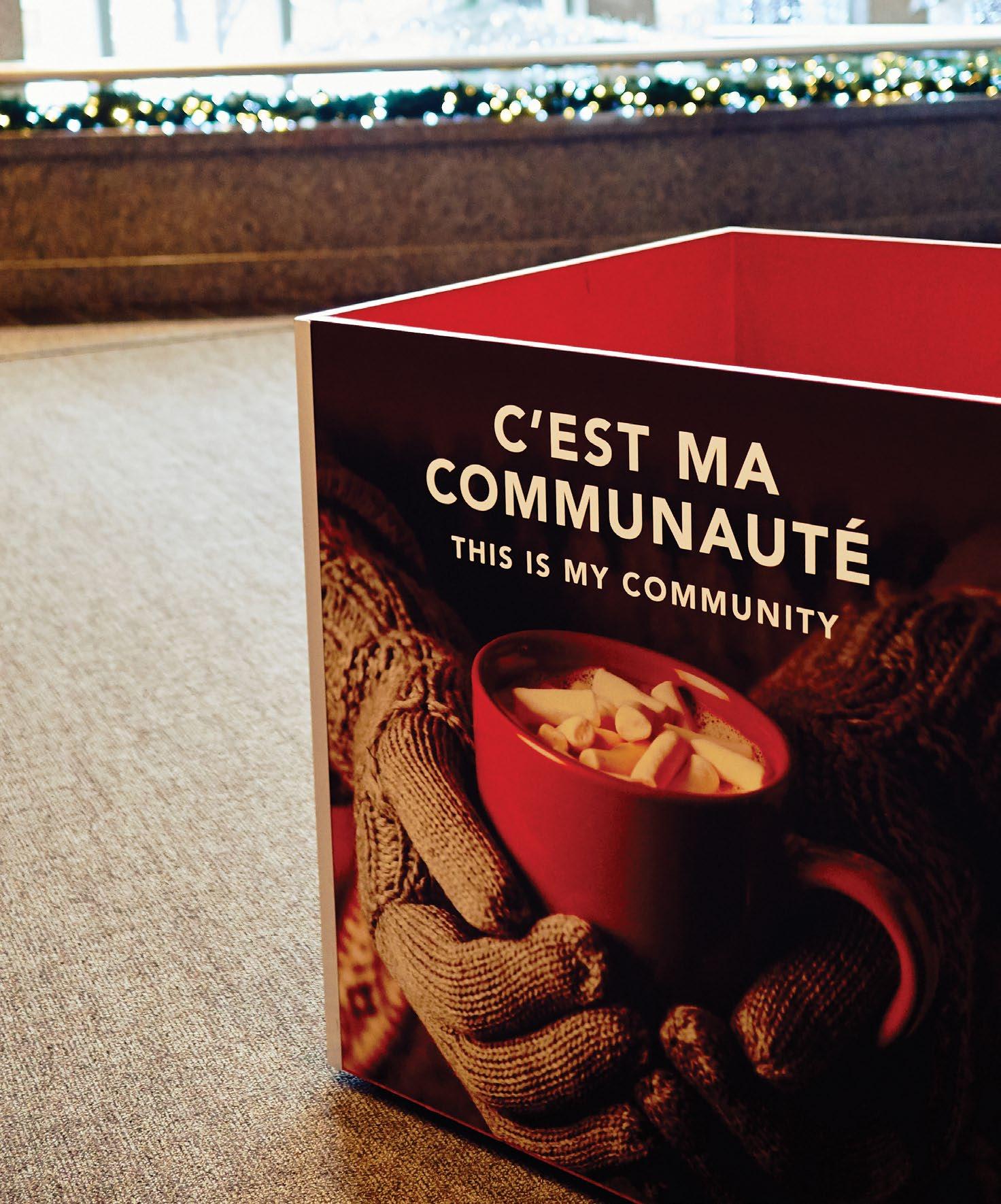
November/December 2022 | Vol. 3 | No. 17
www.foundationmag.ca
Twitter: @foundationmaga1
PRESIDENT / EDITOR-IN-CHIEF
Steve Lloyd - steve.lloyd@lloydmedia.ca
ACCOUNT EXECUTIVE
Laura Tyson - laura.tyson@lloydmedia.ca
Jennifer O’Neill - jennifer@dmn.ca
PHOTOGRAPHER
Gary Tannyan
HEAD OFFICE / SUBSCRIPTIONS / PRODUCTION:
302-137 Main Street North Markham ON L3P 1Y2
Phone: 905.201.6600 Fax: 905.201.6601 Toll-free: 800.668.1838

Foundation Magazine is published bimonthly by Lloydmedia Inc. Foundation Magazine may be obtained through paid subscription. Rates: Canada 1 year (6 issues $48)

2 years (12 issues $70)
U.S. 1 year (6 issues $60)
2 years (12 issues $100)
Foundation Magazine is an independently-produced publication not affiliated in any way with any association or organized group nor with any publication produced either in Canada or the United States. Unsolicited manuscripts are welcome. However unused manuscripts will not be returned unless accompanied by sufficient postage. Occasionally Foundation Magazine provides its subscriber mailing list to other companies whose product or service may be of value to readers. If you do not want to receive information this way simply send your subscriber mailing label with this notice to: Lloydmedia Inc. 302-137 Main Street North Markham ON L3P 1Y2 Canada.
POSTMASTER:
Please send all address changes and return all undeliverable copies to: Lloydmedia Inc.
302-137 Main Street North Markham ON L3P 1Y2 Canada
Canada Post Canadian Publications
Mail Sales Product Agreement No. 40050803



Quebecor increases its support for adapted housing for adults with multiple disabilities with $300,000 donation to Le Pilier Foundation. Le Pilier Foundation is pleased to announce that Quebecor, a loyal partner since 2005, has deepened its commitment with an additional $300,000 contribution to support Maison Québecor. The donation will make it possible to carry out several important projects, including the purchase of a customized van to transport people with disabilities, refurbishment of the residence, and more adapted recreational activities and outings for its residents. Nine adults with multiple intellectual and/or physical disabilities reside in Le Pilier Foundation’s adapted housing facility, which celebrates its 15th anniversary this year.
“Maison Québecor is making a tangible, positive difference
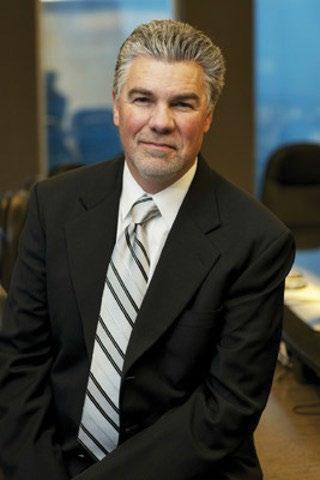
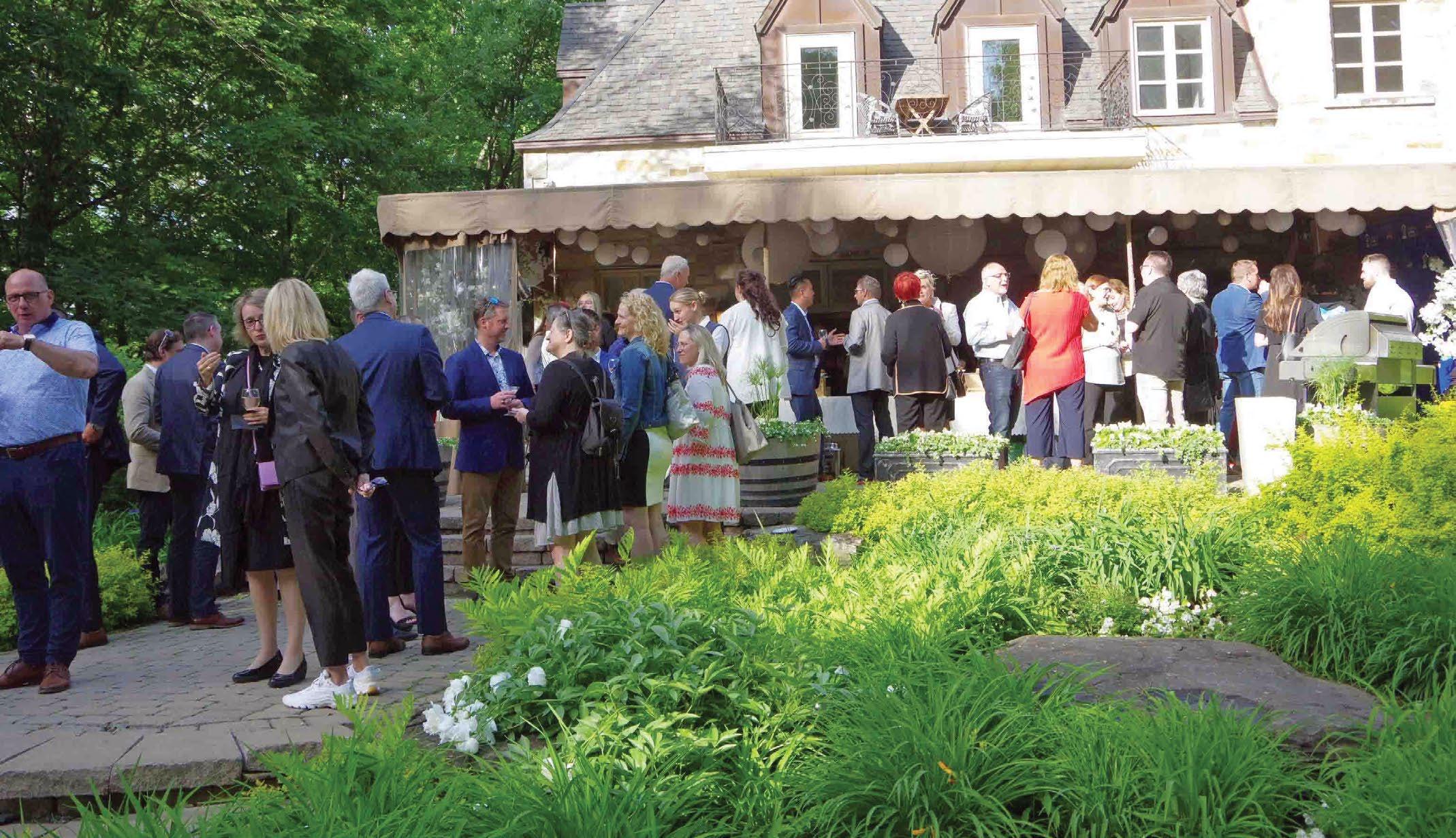
in the lives of its residents,” said Pierre Karl Péladeau, President and CEO of Quebecor. “In addition to providing food and shelter for people living with a physical or intellectual disability, the organization helps them develop autonomy, gradually become part of the community and build self-confidence. The Foundation and its dedicated staff become a warm and caring second family for residents. We are proud that Quebecor’s support will enable the Foundation to pursue its mission of promoting the well-being of people with disabilities.”
“The Le Pilier Foundation is like a family for people with disabilities and their loved ones,” said Johanne Desjardins, Executive Director, Philanthropy, Development and Communications of the Le Pilier Foundation. “Quebecor’s longterm commitment has enabled us to concretely improve their well-being and their daily lives.
The Foundation is privileged to be able to count on increased support from Quebecor.”
Quebecor’s first contribution, in 2005, made it possible to expand Le Pilier Foundation’s residence in Laval and improve the quality of life of 9 residents with multiple disabilities. It was renamed the Maison Québecor in 2007. For the past 37 years, the mission of Le Pilier Foundation has been to improve the quality of life of people with disabilities, young or adult, living with an intellectual disability, a head injury or another type of physical disability, or an autism spectrum disorder, without forgetting the benefits for their families.
Over the next three-years, JA Canada will equip more than 90,000 youth from coast-tocoast-to-coast with financial literacy skills and tools. JA Canada renewed a three-year collaboration with TD Bank Group (TD) to empower more
than 90,000 youth across Canada with the skills they need to live a financially healthy future by participating in the Dollars with Sense program.
Dollars with Sense is a financial literacy program delivered to students in grades 7-9 across Canada. The program curriculum teaches students how to make smart financial decisions, live debt-free, and
become savvy investors. Students learn personal money management skills that they can apply to their lives.
“Dollars with Sense is one of JA’s most in-demand and widely delivered programs. TD’s longstanding and renewed support for the program fuels JA Canada’s engagement of students, equipping them with critical financial literacy knowledge and skills to differentiate between needs and wants; make informed consumer decisions; use credit responsibly; and prepare a budget,” said Scott Hillier, CEO of JA Canada.
“Moreover, TD’s collaboration with our national program development of Dollars with Sense will enable JA to update and inclusively redesign the program increasing accessibility and engagement,” said Hillier.
The redesigned Dollars with Sense program will provide an interactive experience adapted to all learning styles whether students learn in the classroom, with a teacher or volunteer, or independently online at home.
“Supporting Canadian adolescents with the tools and support needed to build financial literacy fundamentals is very important to us,” said Uma Venkataramaiah, Senior Manager – Philanthropy Canada, TD Bank Group. “We’re so happy to continue supporting JA Canada and the Dollars with Sense initiative, both financially and through volunteerism, with programming that is accessible, inclusive and will help provide financial education skills to our future generations of leaders.”
In addition to supporting program development, TD volunteers will also participate in the delivery of classroom-based learning experiences of the Dollars with Sense program. JA
volunteers work in collaboration with classroom teachers to facilitate an immersive learning experience for students. This includes facilitating interactive program activities and sharing their expertise and knowledge as engaging mentors.
A seismic shift in the ownership of family businesses expected over the next three years: KPMG in Canada survey. Impact on philanthropy may be profound. The new digital realities of today’s economy have most Canadian family business owners focused on transition, with nearly eight in 10 (78 percent) developing a succession plan or expecting to transition the business to the ‘next gen’ within three years, finds a recent KPMG in Canada survey. “We are seeing a demographic shift to a younger generation of family business leaders, as a result of the increased reliance on digital technology driven by the pandemic,” says Yannick Archambault, National Family Office Leader, KPMG in Canada. “Technology is dramatically shifting the way businesses need to operate and current leaders are increasingly turning to the next generation to lead going forward.”

Lack of succession plans driving some to sell. Not all
founders plan to pass down the family business. More than a quarter (26 percent) plan to sell their business within the next three years.
“The desire to sell may reflect those ‘next gen’ leaders who are less interested in running the existing family business as they are in managing the family wealth, setting up new businesses or pursuing philanthropy,” says Dino Infanti, National Leader, Enterprise Tax, KPMG In Canada. “In some cases, the founder may want to sell to fund their retirement plans and to free-up family members to be enterprising in new ways.”
Seventy percent of Canadian family-owned businesses report having an environmental, social and governance (ESG) strategy, and virtually the same number (69 percent) believe their ESG programs have a positive impact on the financial bottom line. Two-thirds (66 percent) say the drive to increase their ESG commitments is coming from their next generation leaders and employees.
More than six in 10 (63 percent) say their management pay is now tied to these environmental and social targets. Overall, women are more likely to tie pay to ESG targets with more than seven in 10 (72 percent) making it a factor compared to only 51 percent of men.
“Women family business leaders aren’t waiting for the environment to change around them,” adds Infanti. “As transformational leaders, they are representative of the changes they want to see in their business, the family and society.”
For the fourth consecutive year, Dairy Farmers of Ontario donates to SickKids and other Ontario children’s hospitals reaching over $2 million to date. This holiday season, in the spirit of spreading joy and support to communities across Ontario, Dairy Farmers of Ontario (DFO) donated $500,000 to The Hospital for Sick Children (SickKids) and other Ontario children’s hospitals in Hamilton (McMaster Children’s Hospitals), London (Children’s Hospital) and Ottawa (CHEO). Since 2019, DFO has donated over $2 million through their Milk & Cookies holiday campaign, to support initiatives to families spending the holidays in Ontario children’s hospitals.
Inspired by the magical ritual of leaving milk and cookies out for Santa, this year DFO has also created special Santa Milk-OGrams for patients who cannot be home for the holidays. These care packages full of festive cheer include a fun activity to prepare for Santa’s arrival on December 24 (Christmas Eve), including a customizable milk bottle, milk coupons, a holiday card to decorate and a plush toy.
“Through this donation to SickKids and other Ontario children’s hospitals, Ontario dairy farmers are able to show how important it is to give back and nourish the communities we live and work in,” said Cheryl Smith, Chief Executive Officer of Dairy Farmers of Ontario. “With our new Milk-o-Grams, we hope families
Creative Deviations is an anecdotal and thoughtful how-to guide to help you become more creative with your fundraising. It’s part graphic design, part design thinking, part storytelling, part strategic thinking and part love note to you amazing humans who work so hard for your causes, your donors, your mission and your desire to contribute and make positive change in our world.

Available now at: https://hilborn-civilsectorpress.com

“... this book is revolutionary. It’s a ‘once in a generation’ book. It will rewire your brain.”
—TOM
who are unable to be home for the holidays can also share in the joy and tradition of leaving milk and cookies for Santa.”
“The SickKids community is appreciative of the ongoing support and partnership from Dairy Farmers of Ontario,” said Adam Starkman, Vice-President, Corporate Partnerships at SickKids Foundation. “The holiday season can be an extremely trying time for families spending it in hospital, and DFOs commitment has helped us provide joy and necessary care to patients during their stay.”
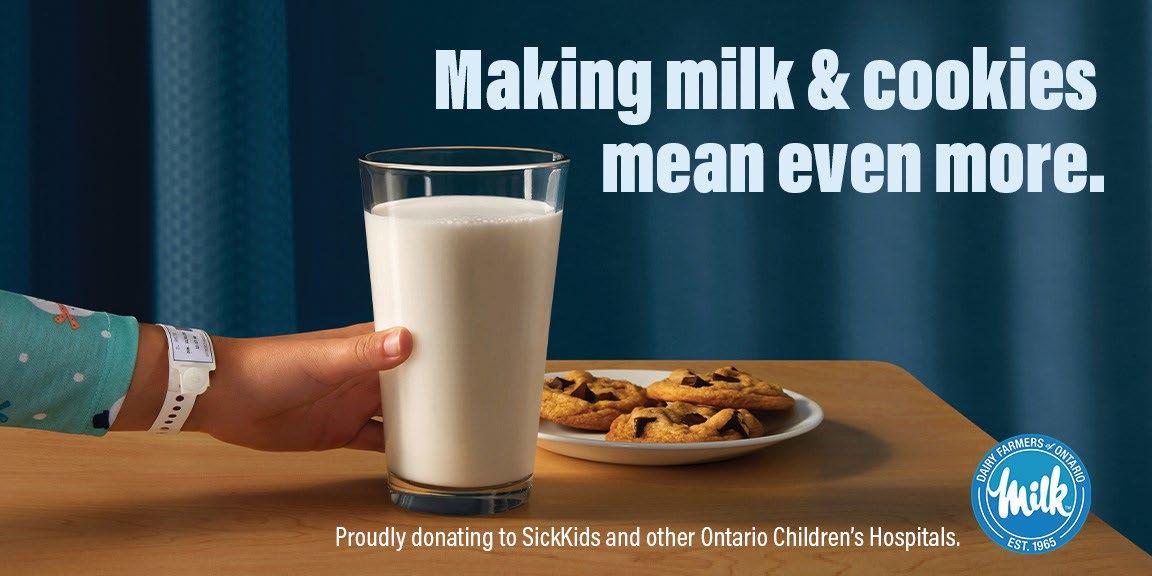
DELAN will donate one dollar for every hour worked by its IT consultants to charities as part of its new program. While the economic context and the labour shortage continue to challenge Quebec companies, DELAN, an SME specializing in recruitment in the field of information technology (IT), is rolling out a new program linked to its contractual division that will allow it to give back to the community. As part of the program called 1 don, 1 heure à la fois, DELAN will draw from its income one dollar per hour worked by each of its IT consultants, which it will donate to one charity amongst Centraide of Greater Montreal, 60 Million Girls, Leucan and Breakfast Club of Canada. Thanks to the diversity of the missions
and the audiences targeted by the selected organizations, each of DELAN’s IT consultants will be able to choose the cause that is closest to its heart.

“Like many entrepreneurs of my generation, I am interested in the impact of my business in the community. I believe that the pursuit of profit is not the only objective of a company and that it is possible, and even desirable, to combine economic growth and social commitment, a vision
shared by my partners and the rest of the team”, indicates the president of DELAN, Jean-François Charpentier.
A breath of fresh air is blowing over the SME run by three partners, two of whom are from business succession. The founder, Anne-Marie Deslauriers, handed over the presidency to her son JeanFrançois Charpentier last June, while Stéphany Desmarais, VicePresident of recruitment, joined the shareholders and thus the executive management team, thus enabling the adoption of a hybrid model between family and traditional takeover. This model promotes innovation and the emergence of new ideas, which allows DELAN to continue to stand out. Moreover, the deployment of the program
«1 don, 1 heure à la fois» is an initiative led by Alexandre Trudeau, also part of the business succession plan, who joined DELAN in May 2022 as Business Development Director of Contractual Division.
According to the Study of Trends in Philanthropy in Quebec, more and more Quebec SMEs are taking an interest in philanthropy. For 67 percent of them, philanthropic culture is an important value, and this figure is set to increase with the arrival of entrepreneurs from Generations X or Y, who are more aware of philanthropy. As SMEs represent more than 99 percent of businesses in Quebec, their potential contribution to the philanthropic ecosystem would be major.
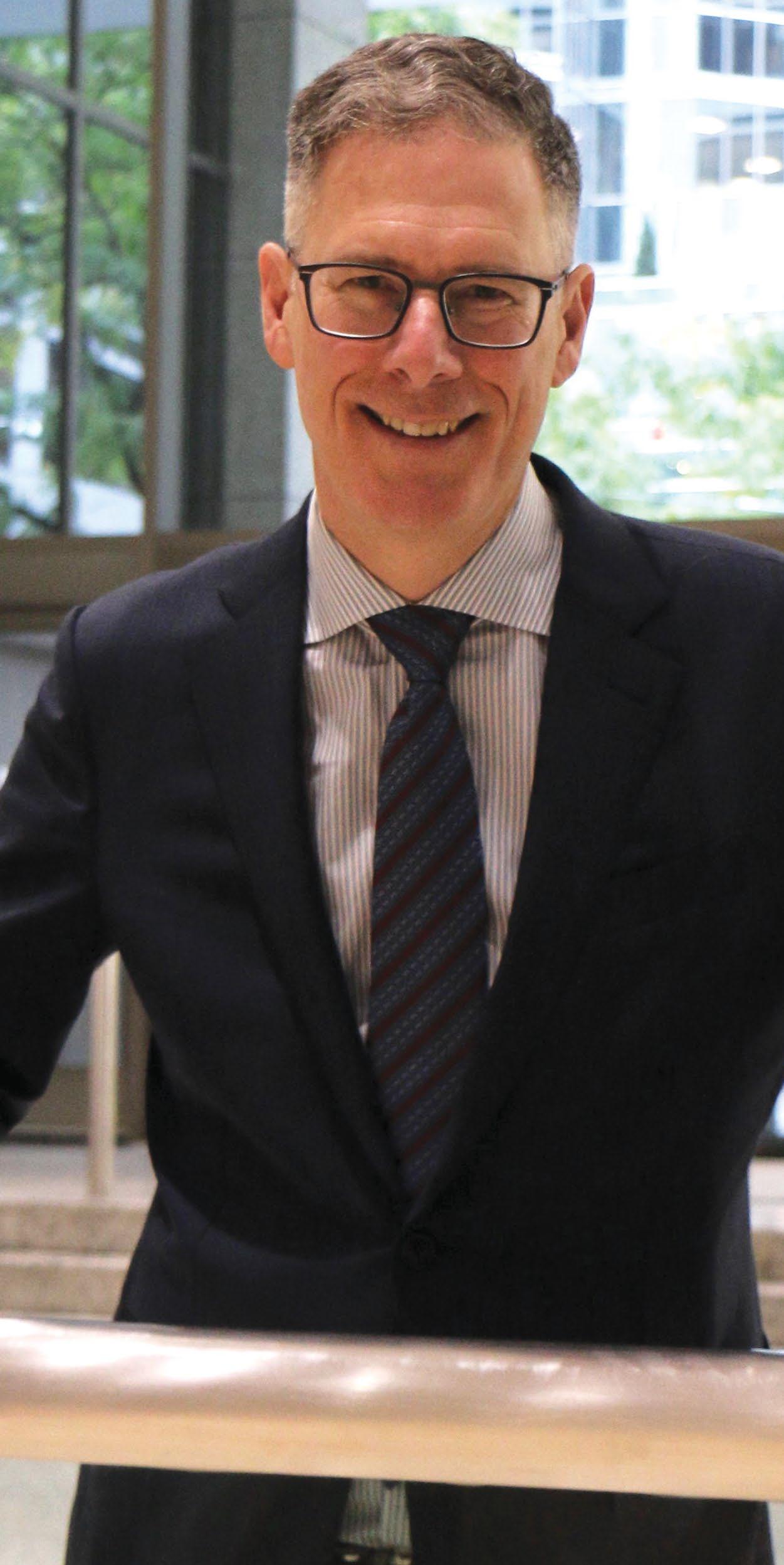
Canadian foundations are experiencing an exceptional moment — of philanthropy, global challenges, and regulatory change. This moment has the potential to produce positive results for charities and communities, but it helps to understand how and why. Below are tales of three Canadian foundations that I have cobbled together from public sources.
The Winnipeg Foundation announced a massive gift of $500 million on November 29th, 2022 — fittingly “Giving Tuesday”. Also fitting for Winnipeg and the future of philanthropy is the donor and way of giving. Miriam Bergen, who died in January 2022, was a low-profile businesswoman who owned 27 rental apartment buildings clustered in Winnipeg. The gift is an estate donation.
First off, awed kudos to The Winnipeg Foundation. Canada’s oldest community foundation (1921) is by many measures also its most successful. It’s connected and trusted locally. It has enjoyed success greater than its national peers in terms of donations and endowment ($1.75 billion in 2021). This donation is for that endowment.
Miriam Bergen is the perfect Winnipeg donor. She wasn’t well known or glitzy. She loved sports (Bombers and Jets), dancing and nature. She had life companion who is a woman. She had no kids and the foundation was her major heir. She wanted a family legacy and ongoing employment for her 200 employees. The last point is where it gets interesting from a charitable perspective.
The donation is in the form of private company shares. The Winnipeg Free Press reports that the Foundation will keep the real estate company intact and use the profits to fund granting. So, in essence the endowment will be majority invested in a single real estate operating company. That may make a lot of sense initially and is probably an excellent source of annual income for granting purposes. Long-term the foundation may run into fiduciary, legal, business and even reputational issues as a major landlord. Fortunately, The Winnipeg Foundation is a strong organization that can navigate these issues, but they aren’t for the faint of heart.
Miriam Bergen, the donor, is also noteworthy. She is a rebuke to the usual image of the “philanthropist” and hence a wonderful reminder not to make sexist or regional assumptions. Hers is one of Canada’s biggest donations ever, but, mark my work, there will be larger one in the near future.
On November 29th, 2022, the Torontobased Ivey Foundation announced in it will be spending down its $100 million endowment over the next five years. The urgent need? Climate change and
funding the policy and technology to mitigate it. After 75 years, this private foundation is a leading funder of environmental solutions, although has funded everything from education to social services to healthcare. Now it is stepping up its response to a global existential crisis by spending capital, not annual investment returns.
The news release from Canada’s 6th oldest private foundations said “The majority of the additional $100 million in funding announced today will be used to enhance the Foundation’s efforts to address climate change and advance Canada’s low-carbon economy. This will double the Foundation’s lifetime grantmaking and increase the capabilities of the Foundation’s core partners on the front lines of Canada’s climate and energy transition.”
Congratulations to the Ivey Foundation and its second-generation directors for making this bold choice. Family philanthropy has an inherent and at times oppositional tension between family ties and public benefit — that is, between family and philanthropy. This Board of Director chose environmental impact over family legacy and continuity.
Ivey Foundation is taking what seems to be a less chosen path, but it is a philanthropic route that is increasingly common. Spenddown and immediate pay out foundations are growing in popularity. Examples of this trend are, however, harder to spot than institutionalized foundations. Sometimes they are hiding in plain sight. The Bill and Melinda Gates Foundation has a spenddown mandate. Philanthropists are giving more to foundations and distributing it faster –both are positive trends.
In 2023, the disbursement quota for foundations will increase from 3.5 percent of assets per annum to 5 percent. Good news for charities seeking funds. For some foundations this increase is easy to manage because they consistently grant more than the
regulatory minimum. Other foundations treat the minimum disbursement quota figure as a regulatory maximum. The low-key $1 billion Li Ka Shing (Canada) Foundation is in the later category.
Li Ka Shing (Canada) Foundation was establishing in 2005, when Mr. Li, one of the world’s richest men, sold his large stake in CIBC. Between 2016 and 2021, its assets have shown some volatility and ranged from $866 million to $1.04 billion. The Foundation has made a series of grants to qualified donees, mostly to international universities.
One of the quirks of the disbursement quota is it is based on three factors.
1. The annual payout rate, which is increasing from 3.5 percent on assets over $1 million to 5.0 percent.
2. The average market value of the two prior years.
3. Any surplus or deficit carried forward over five years.
The Li Ka Shing (Canada) Foundation had a big granting year in 2016 ($55.5 million), but from 2017 to 2021 it has kept to the 3.5 percent minimum and used its surplus. In 2021, it granted a modest $27.7 million or 2.9 percent of the previous two-year average market value of $952 million.
In 2023, however, the Foundation and a few other private foundations, will be required to grant more (or spend more on charitable programs). The Li Ka Shing (Canada) Foundation will need to grant approximately $48 million at the new 5 percent rate. That’s an increase of $20 million or 72 percent year over year. This fully compliant foundation is an example of how raising the legal bar to 5.0 percent can help get funds flowing out of foundations.
MALCOLM BURROWS is a philanthropic advisor with 30 years of experience. He is head, philanthropic advisory services at Scotia Wealth Management and founder of Aqueduct Foundation. Views are his own. malcolm.burrows@scotiawealth.com. He writes this column exclusively for each issue of Foundation Magazine.
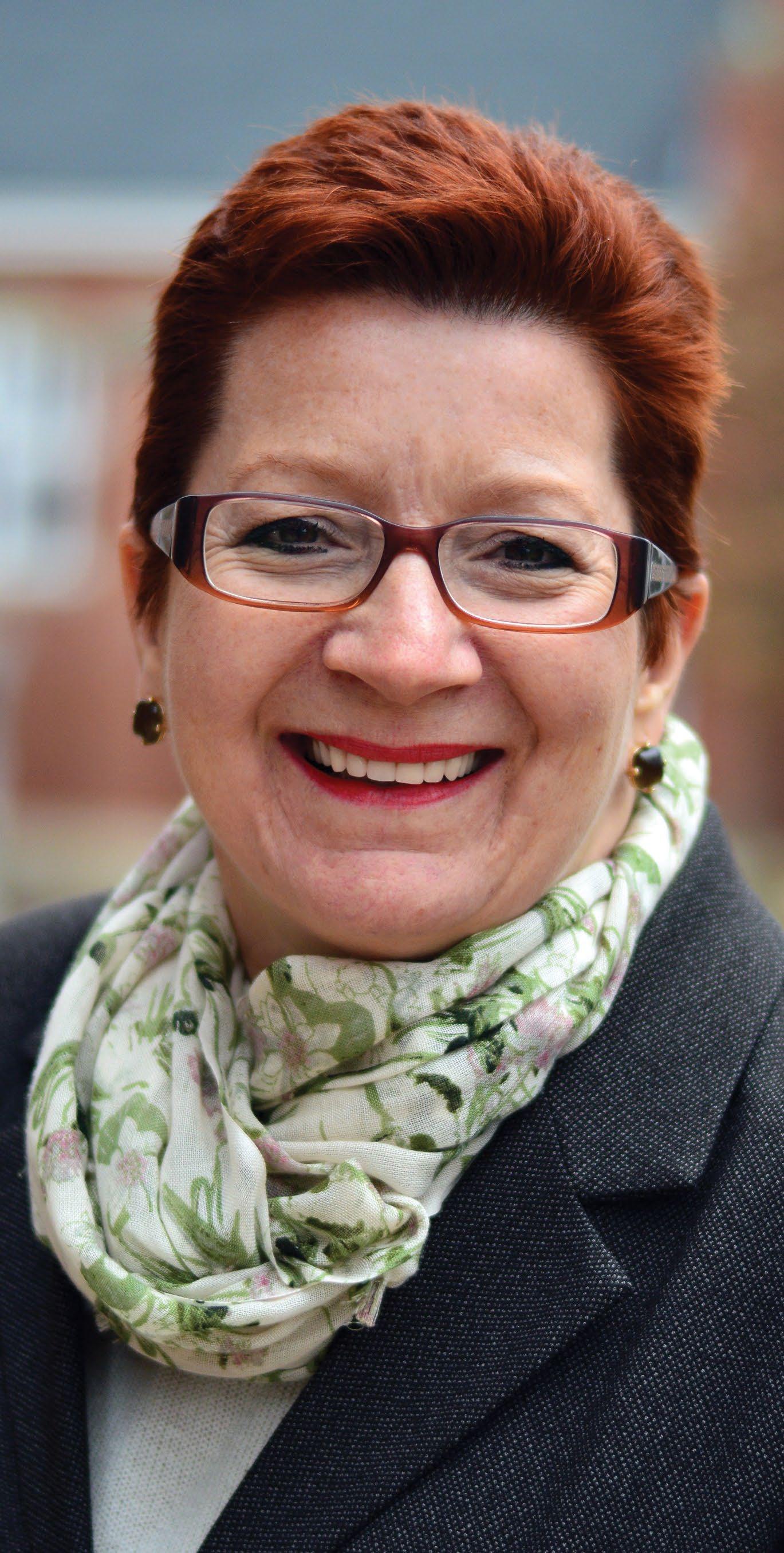
As a professional fundraiser, I always seek to understand what influences my profession and how this impacts my ability to do my work. What has happened in the last few years, and more specifically in the last few months has brought to light fundamental social challenges that have forced upon us serious reflection. I believe that we all have been disturbed by a number of events that will now influence our future thinking about social responsibilities, economic realities, and human relations (the 3Rs). Understanding these 3Rs is instrumental in shaping what the charitable sector will look like in the years ahead.
Last month’s BrainTrust Philanthropy podcast entitled The Great Resignation. Is it Real or is it a Blip?, caused me to question if we are at a juncture in our history, or if we are just reacting to a moment in time. In Episode 54, Vincent Duckworth facilitated a conversation with Adam Pekarsky (Founding Partner and Executive Recruiter at Pekarsky & Co.) and Michelle Berg (Chief Visionary Officer and HR Partner at Elevated HR.) on the state of the workforce in the charitable sector, amongst other topics. This discussion made me wonder. Is this current moment in our history merely the results of recent events,
such as COVID, which influence how we interact in our professional lives every day? Or is this time in our history a new paradigm, not solely influenced by recent events but the result of an accumulation of political, economic and behavioural actions over time which is now shifting what the charitable sector looks like?
I believe we find ourselves in a new paradigm. Meaning that the group of ideas we had about society, politics or work is being affected, and as a result we are changing the way we see and experience life.
Key social issues are being debated and with an increase awareness of “black life matters” or “climate change” as recent examples, we cannot simply accept status quo. Increasing our knowledge on such social issues may enable us to change the narrative around these social paradigms. Dr. Jessica Riddel (Foundation Magazine, Jul/Aug 2022 issue) shared her desire to create a framework to build resilient systems that can change our perspective on how we learn or unlearn as individuals. According to her, “Hope University” can help put in place systems, structures and policies necessary to foster human flourishing which will support established and emerging learners, as well as scholars, in the pursuit of further knowledge creation and sharing. Possibly enabling us to better understand and contribute to a changing social narrative.
I also found that Christina Palassio’s October 2022 article in The Philanthropist Journal illustrated eloquently social narrative changes in the charitable sector. Her article entitled: Shifting the conversation: How the sector is using narrative change to advance social change argues that the idea of narrative change is not new. Organizations and social movements have previously shifted public conversation on key social issues — but according to Palassio, it is something of an emerging area of work in our sector. She states that we must now
find institutionalized narrative change practices as a strategic priority which will then enable charitable organizations to develop strategic messaging that can shift key social conversations. As a result, funding activities could achieve more systemic change.
We have recently witnessed philanthropic commitments trying to shift narrative power to “marginalized” groups which then reframes problematic narratives that stand in the way of meaningful change. Such examples are food security or affordable housing.
Current economic factors also challenge our distinct set of economic concepts, theories, and standards for what would constitute legitimate contributions in the charitable sector. It was Bruce MacDonald (Foundation Magazine, Sep/ Oct 2022 issue) who clearly indicated that the alterations made by charitable
organizations to address the ongoing economic changes were not ephemera. How we pivoted to survive meant we were “re-writing” some of the rules of the charitable sector.

Tara Webber and I both agreed that “Quiet Quitting” (Foundation Magazine, Sep/Oct 2022 issue) was challenging the existing rules of engagement between employers and employees. Consequently, permanently re-writing the rules governing these professional relationships. This employee-employer relationship is now continuing to evolve.
From quitting to layoffs. “Loud Layoffs”, seen as shocking or sudden mass layoffs, have been reported in numerous industries. I therefore feel the need to ask — is this behaviour a response to the pandemic or perhaps a cyclical economic trend in the workforce?
According to Jennifer Liu in her November 30, 2022, CNBC publication, further analysis of each companies’ hiring practices merits attention to better understand the trends before, during and after the pandemic. Corporate behaviour is key to understanding the reasons for these mass layoffs, as well as how the rules of engagement between employees and employers have been impacted. Returning “back-to-business”, as things were prior to this global pandemic may not be possible.
Let’s further explore this corporate illustration with Peloton. Peloton is a home fitness equipment maker and streaming company. They prospered during the pandemic because their customers were home isolating. Now, with less isolation, their customers have changed their behaviours. 2022 is also showing signs of an economic recession. According to The ZipRecruiter Job Seeker Confidence Index (November 2022), Peloton is downsizing their workforce by 12 percent. I must therefore ask. Are these layoffs the result of changed customers’ behaviour (caused by the pandemic) or, are these layoffs a response to an economic recession (which corporations have faced regularly throughout history).
Is this behaviour a response to the pandemic or a cyclical economic trend?
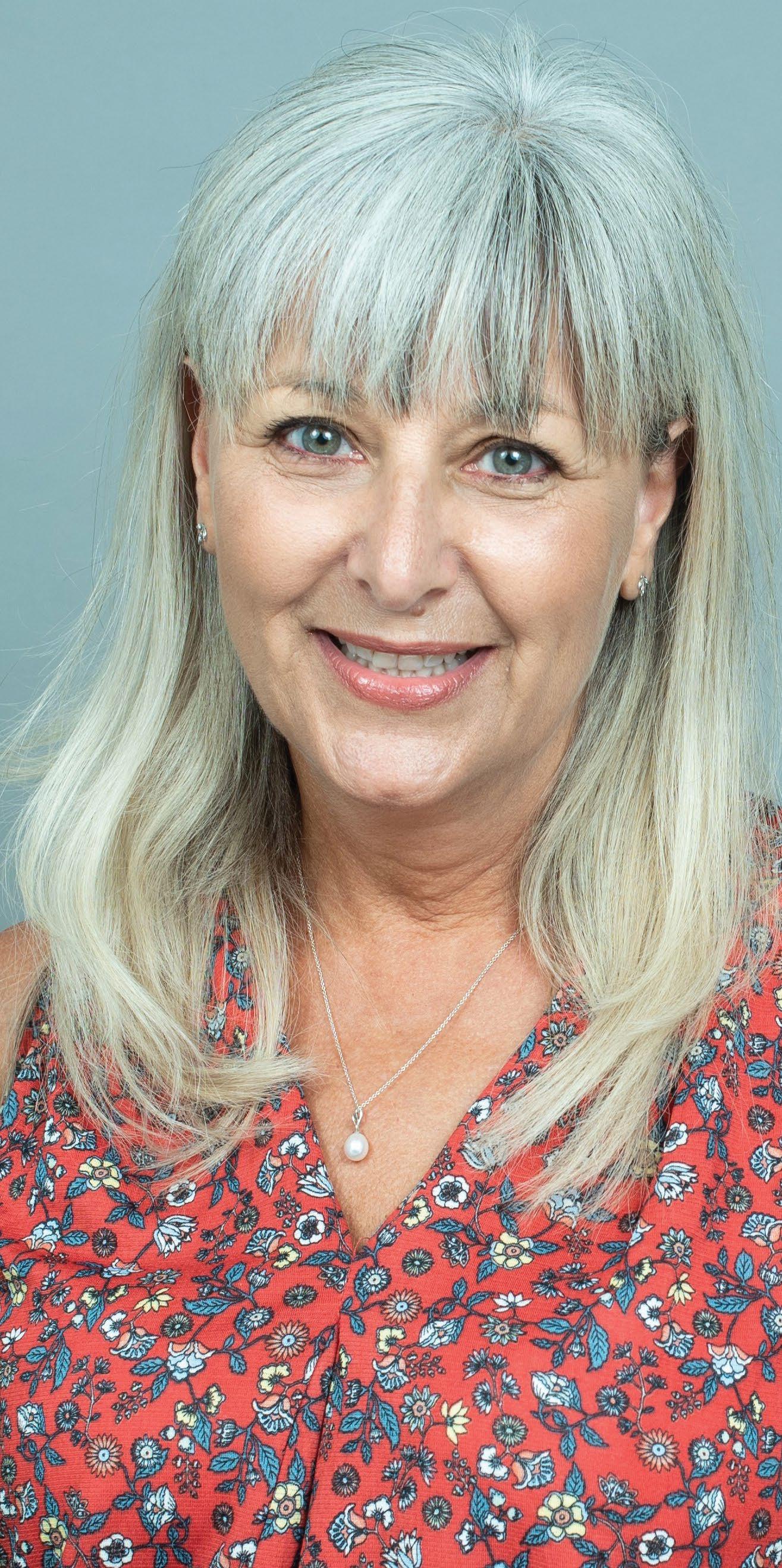 KERR
KERR
I’ve always wanted to write humorous pieces. Oh, to be witty and pithy and bring you a smile. But that’s just not me. Even at 11 years old, my writing was on topics like “growing up” and “why family matters.”
I am not, generally speaking, a light-hearted person. I can be light-hearted. I am full of gratitude and joy. But I dig deep to be silly. That’s why I’m grateful that my daughters and husband are those people who laugh out loud at goofy TV shows and can watch the same funny movie over and over. As an introvert, I’m happy to retreat to my comfy chair and listen to them laugh.
When I write, it usually flows. This article, I’ve walked away from a few times. I realized this morning, on the fourth day of starting and stopping, it’s because I’m sad. I’m sad and I don’t want to spread that sadness to those who grace me with the privilege of their time and attention. So, this is a warning. This article is about what I learned or leaned into over the course of a truly challenging year. If you are looking for something lighter, can I suggest Talladega Nights or Elf?
Globally, nationally, locally, personally — it feels like there is one piece of bad news after another. Whether it’s the indefensible human rights violations in Iran, death and destruction in Ukraine, governance failures like
Hockey Canada, the looming recession, climate change or our eroded healthcare system, it feels never ending.
At the same time, there is significant, heated debate and discussion in the social impact sector about the decolonization of wealth and eradicating the White saviourism inherent in traditional ‘charity’ work. Leaders debate the pros and cons of a more egalitarian approach to fundraising. They want to listen to local communities on how best to deliver missions by ‘working alongside’ rather than ‘seeking to serve.’
We have trained generations of social impact sector staff to centre the donor and put recipients of our programs on brochures and stages to celebrate what could not be done without those same donors. We’ve attended direct marketing seminars that apply customer-loyalty language to our work. We say, “Thanks to you, Jane will live to see anther day.” Now, we are turning that on its head — and there seems to be an expectation that folks will just fall in line. It’s a lot.
And as a result, I’m overwhelmed. I’m sad. I’m struggling to articulate my fears, hopes or aspirations. A friend suggested I focus on the serenity prayer as a way to filter through the myriad of things percolating in my ADHD brain. So, I tried it.
“God grant me the serenity to accept the things I cannot change, The courage to change the things I can and The wisdom to know the difference.” Of course, you know I can’t just pray it without peeling back the layers.
I don’t believe that some things are unchangeable. I think, more accurately, it’s that some things are unlikely to change in our lifetimes. But does that mean we shouldn’t still work towards changing them?
I know I have courage. As author Susan David so aptly writes in Emotional Agility, “Courage is not an absence of fear; courage is fear walking.” (p127) At times, in spite of frequently taking my fear for a walk, I find myself doubting whether I’m making a difference.
Perhaps most difficult, is accessing the wisdom to know which issues to tackle and which to leave to someone else. That’s
partly my ADHD and partly the outreach I receive on social media. Folks asking me to share, like, comment, engage. And I do. If I can. But I won’t share what I have not read myself and this can send me down some long, time-consuming and distracting rabbit-holes.
So how do I manage the sense of overwhelming and the melancholia?
I do a few things. First, I take time away from social media. I read fiction instead of my usual steady stream of non-fiction. I escape with Netflix and write in my journal. I look back on my writing and think about what I’ve learned.
This year delivered some great learning and reminders. A highlight for me was the release of Susan Cain’s book Bittersweet. Like her book Quiet, this one helped me to feel seen, heard and understood. I am a joyful, grateful and melancholy human being. I practice gratitude with deep conviction, and I understand, now, that it is okay to feel deeply. To long. To care. Cain writes: “…sadness sits in the same location as our need to breathe, digest food, reproduce, and protect our babies; in the same place as our desire to be rewarded and to enjoy life’s pleasures. They tell us, as Keltner explained to me, that “caring is right at the heart of human existence. Sadness is about caring. And the mother of sadness is compassion.” (p10-11)
My hope for 2023 is that it is the year of compassion. The year we truly see, hear and seek to understand each other. Maybe these “Thinking Out Loud” thoughts will help.
1When you doubt yourself reach out to colleagues who will remind you that you are both impactful and effective. And that you are enough. This is tricky when you are a singleshingle consultant so when it happens to me, I read the kind and generous notes received in relation to my book Tarnished: Let’s rethink, re-imagine and co-create a new social impact sector. Those notes remind me that change on a personal level may lead to institutional change which may lead to systemic
change. That’s my goal: to change the world for social impact sector workers, one reader at a time.
2Stand up for yourself and others.
People are not used to folks standing up for themselves. This is particularly true if you identify as a woman. When you stand up for yourself, ask to be included, question why you are not included — folks don’t know what to make of it. They will accuse you of “lashing out” rather than consider how they might have been more inclusive. You will also be called bitter and mean. This is why standing up for yourself is only possible if you have a very strong sense of who you really are. Don’t let the haters get you down. Don’t let anyone tell you who you are. You know.
When you begin a new project, every single time, ask yourself – who should be involved?
Who should lead? Co-lead? Who is missing? Why are they missing? Often those you’ve chosen to exclude, because it is a choice, are the very folks who might bring a perspective you had not considered. Let’s break out of our cliques. If you don’t stop to think about this at the onset of a project, you will find yourself facing push back from the folks who ought to have been there in the first place. When those you’ve chosen to exclude speak up for themselves, please refer to point # 2 above.
Give your colleagues the benefit of the doubt.
Don’t immediately believe that because their lived experience is different to yours that they disagree. There is always more than one right answer. Make space to explore, discuss and walk away for awhile to digest and reflect. Treat each other with kindness, respect and a deep belief that the more minds contributing to a project, the better the outcome.
Ihave one of the best jobs in the world. I spend my days talking about mental health — a topic close to my heart — with passionate people who are committed to driving change. I’m the Chief Marketing Officer and Vice President of Community Giving and Engagement at CAMH Foundation, where we raise and steward funds that help evolve the way we understand and treat mental illness.
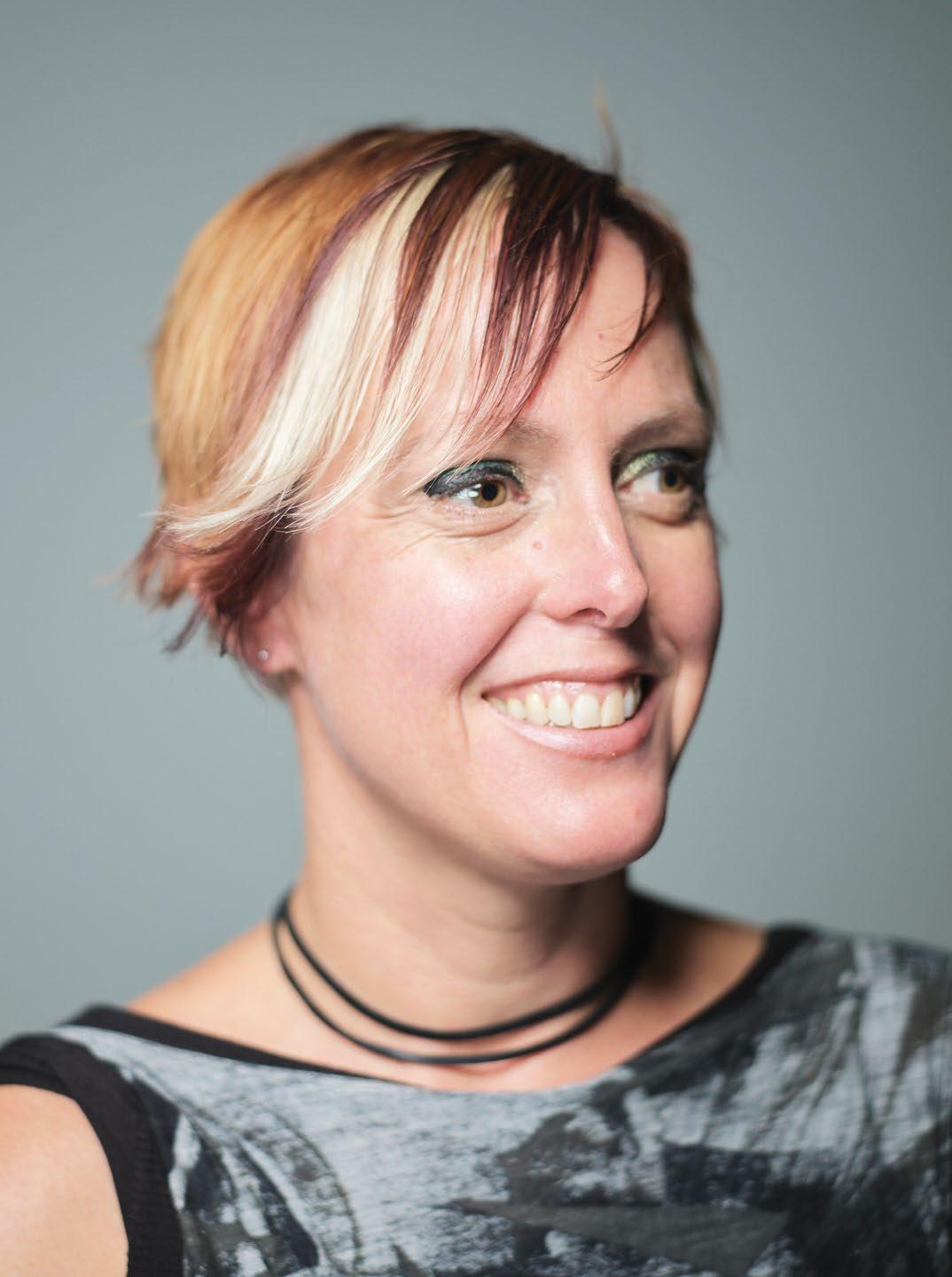
The most powerful and inspiring parts of my day-today are the conversations I have with other like-minded individuals, who want to help and are committed to breaking down the stigma of mental illness. We do this by sharing and talking about our personal experiences, as well as creating space for others to do the same. Opening up the conversation around mental illness has a direct effect on our desire to see change. We all have a reason to join this community of Change Agents. We all know someone that is affected — a friend, a colleague or a family member, perhaps even ourselves now or at some point in our lives.
But being a Change Agent is more than just sharing and listening, and it’s definitely more than just a monthly gift. It’s knowing that we’re making a difference in the lives of millions of Canadians who struggle with mental illness every day. We believe in a world where mental health treatments are more effective, where care is more accessible, and where suicide prevention is a public health priority. We know that we’re part of the fight to stop mental illness from destroying lives. Our Change Agents directly contribute to alleviating the effects of mental illness, and despite the economic hardship we’ve faced in the
past couple of years, the community is growing — up over 40 percent from this time last year! That’s 30,000 of us with different reasons united by the same cause. And it’s because of those reasons, that we are leading a movement to create a society that believes that Mental Health is Health.
Part of my job is ensuring that we are reaching the public — all of you — with our mission, in a way that encourages people to join the movement. While a lot of our efforts include digital marketing and direct mailing, we had been missing something over the past few years. Something that we had all been starved of as a result of the pandemic — the power of face-to-face conversation. We have so many choices to communicate with one another, some perhaps more convenient than others, but none as effective as communicating in person and connecting with someone else in real time. That is why in 2022, we were thrilled to be able to bring back door-todoor and street fundraising, our program designed to reach communities across Ontario to inform and inspire individuals about the important work happening at CAMH — Canada’s leading hospital for mental health.
You may have seen our canvassers on the streets of Toronto or at your front door, ready to provide current and meaningful information in an open conversation about mental health care. Their job is to connect with people in our communities, educate them on the global mental health crisis we are facing, and encourage them to make a monthly donation and join the community of Change Agents. One of our donors, who
was approached by one of our face-toface canvassers said that they learned how CAMH is able to help people living with mental illness who are struggling or in crisis and that’s what convinced them to become a Change Agent. They said, “I’ve been donating monthly since then, because I want CAMH to always be there to help someone who needs it. I’m proud to support CAMH with my monthly donation.”
We engage in this kind of face-toface fundraising because our presence in public spaces resonates with people. Our message in day-to-day interactions reminds people that there is a need for change. Improving public awareness of CAMH’s goal to transform the way society thinks about mental health not only destigmatizes mental illness, it also supports our monthly giving program, which provides reliable, long-term funds

to CAMH. I encourage you to give them a moment of your time to learn about the future we’re hoping to build together.
We have big things coming next year that I’ll be able to share very soon. Until then I urge you to get involved in our movement. Consider your reason and visit camh.ca/get-involved to join our community of Change Agents, start a conversation with your loved ones about mental illness, and get inspired to save lives today.
SARAH CHAMBERLIN is Chief Marketing Officer and Vice President of Community Giving and Engagement at CAMH Foundation. The Foundation supports the philanthropic efforts of CAMH, Canada’s largest mental health teaching hospital and a world leader in mental health research, treatment, and advocacy.
Please visit CAMH.ca to read more about the important work CAMH is doing with the help of our communities or email Sarah at sarah. chamberlin@camh.ca. She writes this column exclusively for each issue of Foundation Magazine
We engage in...face-to-face fundraising because our presence in public spaces resonates with people.

As a new year approaches, people often rush to make charitable donations to get a donation receipt that can be applied against 2022 taxes due. However, reaching for your chequebook or credit card to make last-minute donations is the least tax cost-effective strategy.

We’ve identified more than 20 ways to be even more charitable- all are more tax and cost-effective — allowing you to maximize your impact and minimize your tax. This year, as you celebrate the holiday season, I encourage you to look around at your loved ones and consider how you can build a more enduring philanthropic legacy.
Make a new year’s resolution to do better and give yourself the gift of even more tax savings.
DAFs are probably the greatest hidden treasure for philanthropy in Canada. You can establish a DAF — personally, corporately, or both — which will allow you to donate to one entity, receive one tax receipt and subsequently distribute money to any registered charities in Canada. The nice part is that you don’t have to decide right away. A DAF is the “light” version of a private foundation, involving far less paperwork, disclosure, and administration, enabling you to donate now (and get a tax receipt now) and then strategically determine where to direct your money. It can be a good complement to many of the donation maximizing strategies below. Contact us to obtain a copy of our one pager on this topic.
If you have appreciated securities you want to sell, donating them makes much more sense than selling them, paying the capital gains tax, and donating the cash that’s leftover. So, anytime you’re thinking about donating, consider whether you have appreciated stocks you can give the charity instead of writing a cheque or charging your gift to a credit card.
And if you love the securities so much, you can always buy them back again at the current market value.
of simply changing the beneficiary designation on the policy to the charity, in which case there is no immediate tax benefit, but your estate will receive a donation receipt for the death benefit after you pass away. You can also donate the policy itself to the charity. In that case, you’ll get a donation receipt for the fair market value of the policy that you can apply against taxes due on your next tax return. Any premiums you continue to pay on the policy will also receive donation receipts. One note of caution: beware of the 3 year and 10 year redeeming provisions to ensure you get a fair market value receipt and not just the cost base value.
It’s been a challenging year for many investors, unaccustomed to high levels of market volatility. Your portfolio may contain investments in a loss position, and you may have decided to sell some because you don’t think they’ll recover.

When you sell stocks, exchange-traded funds, mutual funds or segregated funds at a higher price than you bought them, half of the capital gain is taxable. While it’s great that a publicly traded security’s price went up, these investments are essentially a future tax liability. Fortunately, you can get around this if you donate those stocks “in kind” to a registered charity or your DAF. In that case, you get a tax receipt for the current fair market value of the donated securities, and you pay no tax on any capital gain.
Selling at less than your adjusted cost base results in a capital loss that you can apply against capital gains in the prior three years or in any future year. If you save taxes through tax-loss selling, consider donating all or some of the money you save as a moral victory from market challenges.
If you have a permanent Life Insurance policy that you no longer need, consider gifting it to charity. You have the option
Term insurance provides Life Insurance protection for a specific term, and most people assume that it has no more value at the end of that term. However, before a term policy expires you have the option to convert some or all of it to permanent insurance with no medical evidence required. If you don’t need the Life Insurance protection for yourself, you can donate the insurance policy to a charity. As above, you’ll get a donation receipt for the fair market value to save you taxes, and any future premiums are taxdeductible charitable donations. The best prospects for this are older people with health challenges. This will provide the best fair market value donation receipt.
With push-button consolidations, you get fast closings and real-time analytics—in minutes, not weeks—for maximum impact on your nonprofit’s performance.
•
Sage Intacct’s multidimensional database lets you aggregate transactions and activities across your organization:

• Achieve a granular level of accuracy
•
•
How can your nonprofit achieve efficiency and clarity when you’re operating different legal entities with different currencies and different tax jurisdictions? Forget the headaches of spreadsheets and manual reconciliations.

•
Multiple entities
Multiple currencies
Multiple locations
You can also buy and donate a new Life Insurance policy to your favourite charities. Again, the premiums you pay are charitable donations. And when a charity owns permanent insurance — and this applies to strategies 4 and 5 as well — it doesn’t have to wait for the insured individual to die in order to benefit financially. Instead of reinvesting dividends in additional insurance coverage (which keeps the dividends from being taxed when held outside a charity), the charity can receive the cash dividends every year with no tax consequences. It can also access the cash surrender value (CSV) of the policy with no tax consequences. Either approach allows the charity start putting your legacy gift to work while you’re alive to see it.
If you are “financially fortunate”, you probably don’t need your Canada Pension Plan (CPP) benefits to fund your expenses in retirement. That money just gets taxed, invested and taxed again. We call it “The Tax Grind”. And it ends when you die.
Instead, you can use only this government-supplied “never spend money” to pay the premiums on a Life Insurance policy. A married couple receiving about $26,000 of CPP benefits annually can purchase approximately $1.4 million in permanent Life Insurance using those funds and now pay no taxes on their CPP income!
There are multiple ways to apply the CPP Philanthropy™ strategy, ranging from saving your estate about $700,000 in taxes to leaving an additional $1.4 million to your family. Contact us to obtain a copy of our CPP Philanthropy™ one pager.
Registered Retirement Savings Plans (RRSPs) and Registered Retirement Income Funds (RRIFs) are a great savings vehicle that defer taxes on investment growth, for as long as the money remains within the plans. Eventually, the accumulated money has to come out. And that’s when the problem arises — because all the withdrawals are taxed as regular income. In Ontario, high earning taxpayers lose 53.35 percent of those savings to the tax department. A $2 million RRSP/RRIF is worth only $920,000 to your heirs.
Flow-through shares are issued from certain resource companies in the mining, oil and gas, renewable energy and energy conservation sectors. They flow through to investors the exploration and development expenses that junior resource corporations can’t benefit from claiming, making them a very tax-effective investment. They’re also an extremely cost-effective donation vehicle. For example, if an Ontario resident taxed at the highest marginal rate of 53.5 percent donates cash, the after-tax cost is 49.6 percent. If that same person donates flow-through shares, the after-tax cost could be as low a 5 percent - 15 percent based on the availability and jurisdiction. Some examples of flow through share companies are PearTree Canada, Oberon Capital Corporation, Ber Tov Capital, WCPD and more. Contact us to obtain a copy of our analysis “After-Tax Cost of a Donation”.
Create an exceptional charitable gift that combines favourable elements of an Annuity, Life Insurance, Philanthropy and Tax to achieve guaranteed income, maximize legacy gifts, create annual gifts, and save taxes.
There are 4 ways to implement the GPS – Gift Pension Strategy™. Using a $1 million gift as an example, you can receive guaranteed annual income of more than 9 percent, donate from $1.63 million to $2.7 million to charity, or leave an additional $1.7 million for your family PLUS a $1 million legacy gift to your favourite charity or DAF. Contact us to obtain a copy of our one pager on this strategy.
Consider using the RRSP/RRIF Tax Converter™ strategy to donate all or part of your RRSP or RRIF to your own charitable fund (Private Foundation or Donor Advised Fund) or favourite charities, leaving nothing to the tax department. Your gift can be amplified further by using some of the transferred money to purchase a Life Insurance policy owned by the charity, your personal foundation or DAF. Contact us to obtain a copy of our one pager on this strategy.
The foregoing strategies are just a sampling of the opportunities available to realize your charitable vision and reduce your tax bill. Don’t do it alone, this is not a DIY project.
Our advisors across the country are available to help you navigate the process. Please reach out to us anytime. We’re committed to maximizing Canadians’ gifts to charity and tax savings, and we’d love the opportunity to help you meet your philanthropic objectives.
Wishing you and your family a healthy, happy and charitable 2023.
MARK HALPERN is a well-known CFP, TEP, MFA-P (Certified Financial Planner, Trust & Estate Practitioner, Master Financial Advisor – Philanthropy). He was honoured to speak in the Disruptors Category at Moses Znaimer’s most recent ideacity conference. His talk generated high interest and comments. Watch “The New Philanthropy” at bit.ly/MarkHalpernTalk
Learn more at www.wealthinsurance.com. He writes this column exclusively for each issue of Foundation Magazine.
As we look to 2023 and ways to build better, more inclusive cities, we must always ask ourselves, “Who will be impacted by the decisions we make?” and “Who are the people sitting at the decision-making table?”
There is nothing more important to the future of our cities than those who will lead them, which is why CivicAction prepares, connects, and activates the leaders of tomorrow.
We convene, collaborate, and co-create new solutions for better, more inclusive cities, and we’re calling on leaders from all sectors, backgrounds, and lived experiences to join us.
Foundation Magazine reached out to a wide range of people who help make the philanthropic sector such a vital part of Canadian society. We spoke with many of them personally, and invited hundreds of others to share their thoughts with our readers, to provide insights, ideas, wishes, hopes and dreams to the millions of generous and supportive Canadians across the nation. We also chose a selection of thoughts from other sector leaders who expressed themselves without our invitation. We thank you for participating by reading the results. Here’s what they had to say when we asked “What’s on your mind this Giving Tuesday?”
JENNIFER JOHNSTONE President & CEOCentral City Foundation is a community legacy created over 100 years ago to support our neighbours in need. As we look to the coming year, we continue our journey towards truth, justice and reconciliation as a philanthropic organization, building relationships rooted in mutual respect and selfdetermination, strengthening diverse leadership within our organization and our community, consistently applying the learning we gain each day from those with lived experience in our community.
AMY STEIN Executive Director SUSAN DEIKE Philanthropy Advisor WorldA child of 11 died, killed by a drunk driver. I never met her but she lives on. She had dark hair, green eyes, a smile that lit up a room. She loved her dog. Nobody knows how they’ll react when grief tears out their heart but her family chose love. They named a service dog after her dog and it helped an autistic child. Two families joined by one dog. Giving CAN help mend a broken heart.
Henry’s Foundation - Putting Mental Health
The Henry’s Foundation, envisions a Canada where one has to suffer alone and where creative expression in all of its forms, is recognized as an effective way to promote, support and improve mental health. As part of our long-term strategy, we spent a significant amount of time this year, refining our focus with an evidencebased approach to create a clear and concise vision. We discussed our opportunities and challenges honestly to ensure we’re focused on impact. I’m immensely proud of the how far we’ve come and how we’re helping people find pathways to mental health through arts and creativity.

People look to WWF and its leadership to bring imagination and perseverance to the important work of conservation, and to build bridges between government, civil society and business in devising solutions at the scale of the challenges we face. The world demands no less of us. Conservation endures as a living discipline because it is inhabited by a magnificent collection of people. Only by working together can we create solutions to the most vexing problems we face.
SHARI GRAYDON Catalyst/CEOGiven the essential role women play in every aspect of our collective lives (so reinforced by the pandemic), I’m continually struck and disappointed by the fact that a mere two percent of philanthropy in Canada is directed to charities that are explicitly working to deliver gender equality. We’re not nearly the leader on this front that we imagine ourselves to be (we rank 61st around the world for political representation), and we’re urging donors to be deliberate about helping us and others to change that. Informed Opinions is relentlessly strategic, measuring our progress and pivoting as necessary to deliver impact.
CARA EATON Executive DirectorFor many people, it’s becoming harder to prioritize giving their time to a cause. Cost of living and inflation means volunteerism can be at odds with the hours or travel costs that an individual has to choose to otherwise invest in paid work. Non-profits are feeling the symptoms of this shift in prioritization of time, coupled with volunteers’ ongoing concerns of safety when returning in person or experience with burnout from giving back online. When we think about addressing a volunteer shortage, it starts with not expecting the same as pre-pandemic, but exploring new models of service or giving.
What does it mean to give? Offer, supply, bequeath? Since money is not the only asset given, as a sector, we must recognize our volunteers’ gifts. What do they give besides time, which is often equated to a dollar amount as if the volunteer were taking paid staff’s place? What do volunteers offer? ❯ Expertise ❯ New ideas ❯
Ability to focus on clients without distractions
Diverse backgrounds ❯ Community connections
Advocacy ❯ Passion for cause
A sounding board ❯ Avenues to more donations and recruitment ❯ Support for nonprofit staff
Volunteers are our most valuable currency. Let’s make 2023 the year we elevate volunteer contributions.
Given the impending increase in the Disbursement Quota combined with a looming recession, the subject of investment mandates for our foundation’s reserve funds will take on a more important role in the years to come. In the long term bull market that was, it was too easy to assume we were positioned well and were taking on an appropriate amount of risk. Add to this mix increasing pressure to grant out a larger piece of the pie every year and the importance of our portfolios grows even more. The definitions of our time horizon and our risk tolerance are likely changing. In a world where we are reconsidering the meaning of the world “legacy”, Boards will need to spend more time on this critical element of their foundation’s work.
Durham
Serving as Executive Director at DCAF has been a great experience over the past couple of years. Looking forward to 2023, DCAF is expecting another challenging year. Our Foundation will continue to develop new relationships with various community partners and work to diversify our funding base. DCAF is pleased to be supporting over 4000 children and youth who find themselves living in vulnerable family situations. DCAF extends special thanks to all donors and supporters. Working to ensure that No Child, Youth or Family Shall Be Left Behind.
One of our biggest successes this year has been our work to transition to a housing focused shelter. As we strive to eliminate homelessness the way to do that is to get people housed. Caring for an individuals welfare in this way is central to their well being and gives them so much dignity. The ability to help someone move out and to contribute to their basic needs when they do so really helps to set people up for success. Partnering with local businesses and individual donors to make that possible helps us to be able to do so much more. Thank you for helping us to grow hope.


There is not much to sing about when it comes to some people solely relying on fundraising ratios to determine whether a charity is “deserving” of support.
What are appropriate overhead costs for a Canadian registered charity? ‘Overhead’ can be defined as the ongoing expenses of a charity that cannot be directly attributed to any specific charitable activity, but may still be necessary for the charity to function.

With the elimination of the 80/20 expenditure requirement in the 2010 Federal budget many Canadians are asking how to evaluate charities and which ones are deserving of support. One of the indicators that is suggested is ‘overhead.’ But is this is a good indicator of the efficiency and effectiveness of a charity?
Some may also include in overhead the costs of fundraising. In April 2012 the Charities Directorate of the Canada Revenue Agency (CRA) released its revised Fundraising Guidance http:// tinyurl.com/8×99n2j It sets out expectations for registered charities with respect to fundraising.
This article will focus on the administration part of overhead and not on fundraising. Anyone interested in the fundraising issue should review the Guidance. It is especially important that staff and volunteers who are involved with fundraising,
governance, or completing the T3010 (the annual filing to CRA that every registered charity is required to submit to maintain registered charity status) read the Fundraising Guidance. However, the Fundraising Guidance is not, and does not purport to be, a comprehensive tool to evaluate the effectiveness of a charity generally, as it only deals with fundraising conduct, practices, ratios and allocation.
The CRA discusses administration in the guide to the T3010 called Completing the Registered Charity Information Return: Line 5010 – Enter the part of the amount of line 4950 that represents management and administrative expenditures. This includes all expenditures related to the overall management and administration of your charity. Other examples of expenditures you should include here are the cost of:
❯ holding meetings of the board of directors;
❯ accounting, auditing, personnel, and other administrative services;
❯ purchasing supplies and equipment, and paying occupancy costs for administrative offices; and ❯ applying for grants or other types of government funding, and/or for gifts from other qualified donees (usually foundations).

Some expenditures can be considered partly charitable and partly management and administration. These may include expenses such as salaries and occupancy costs. In these cases, it will be necessary to divide the amounts accordingly between lines 5000 and 5010. How you account for these expenditures should be reported throughout your charity’s return on a reasonable and consistent basis.
In the United States some services have ranked charities based on the percentage spent on ‘charitable activities’ or the ‘mission.’ One reason that these ratios are popular is that it is a calculation that involves total expenditures and total amount spent on charitable work. Seemingly this is an easy calculation to make. It certainly is easier to work out than whether a charity is ‘effective.’ While overhead ratios are interesting, these ratios usually hide a lot more than they reveal.
The biggest problem with relying on overhead is that the numbers are very unreliable. Most charities are run by well meaning volunteers. They often do not properly understand the distinction between administration and charitable activities. Sometimes they include obviously charitable work in administration, but more often than not they include administration in charitable activities. This, more than any other factor, can account for the differences in overhead numbers. Even if volunteers or staffers understand the distinction mistakes are made on the T3010 filings. Sometimes further mistakes occur when CRA inputs the information. In addition to these differences, there is not as much consistency in accounting standards relating to charities as there should be.
It is fair to say that two charities could be treating the same expense very differently. About two-thirds of registered charities identify themselves as having no fundraising costs, and about a one-third as having no management and administration expenditures. According to the T3010 data, most charities do not spend a dime on professional services, which includes accounting and legal work. You can review the T3010 filing of any registered charity online.
The problem with relying on such a simple indicator is that you can easily be very wrong and the results can be pretty awful. Unfortunately, large charity scams often have great ‘ratios,’ either because they count non-charitable expenditures as charitable or because they inflate the fair market value of the work that they do, or both. A group that claims to be very efficient, spending 95 percent on charitable activities, and is being lauded by the media, may in fact only be spending less than one percent on charitable activities. This is a technique used by some charity gifting tax shelter schemes to make their numbers look good. Many tens of thousands of people, including individuals with very strong
financial and business backgrounds, have been duped. Even comparing the ratios of two legitimate organizations can be deceiving. For example, at a conference on NGOs a few years ago there was a lecture on measurement and effectiveness of charities. The presenter pulled from the U.S. website, GuideStar, two charities that operate in the same sector and in the same city. Charity “A” spent 25 percent on overhead and Charity “B” spent 10 percent. The presenter was a top measurement consultant who has done work for major U.S. foundations. The presenter asked the audience which charity they would support if they were a donor or a funder. Almost everyone raised her hand to support Charity “B”. The next slide from the presenter contained more information on charities “A” and “B”, and how the low overhead charity was not nearly as effective, had no reserves, had low staff morale, was in financial trouble and was considering its options for merger or being wound up. Now which charity are you going to support?
Further concerns with the use of the overhead ratio: there is tremendous variation among charity types in Canada. Some are big, others small, some rural and others urban, some work locally, others nationally or internationally, some deal with high profile and sympathetic issues like children’s health, and others deal with important but lower profile issues. Some are newly setup, others have been around for a long time and have faithful supporters. Charities have different missions and some carry out direct charitable activities while others are umbrella organizations or foundations and do not directly carry out charitable activities. All these factors can affect overhead.
Some charities, especially those drawn from small ethnic or religious groups, can keep fundraising and administration costs very low (1 percent-5 percent range). But they are sometimes run entirely by volunteers that work within one small community. There may be issues of transparency and accountability, and even of the sustainability of the organization, if the volunteers curtail their efforts. They may be doing a good job or a poor job – but that is often difficult to analyse. Some charities lend themselves to being small operations, while others do not. For example, it would be a challenge to run a full-service metropolitan hospital with only volunteers.
Transparency and accountability are expensive. Putting out an annual report takes time and money. Communication with stakeholders and other interested groups costs money. Having a website costs money. Having proper financial controls costs money. Regularly monitoring activities and evaluating those activities is more expensive than dispensing with the monitoring and evaluation and just doing the program in perpetuity because
There is a technique used by some charity gifting tax shelter schemes to make numbers look good.
you have always done so. Having an office with a proper filing system costs money.
It is cheaper to keep records in a basement and it may work until there is a sewage backup or basement flood. Trying to have a charity operate within the legal and accounting rules is more expensive than just ignoring them. Avoiding almost all legal and accounting fees may seem like a good idea until it results in a problem that requires an expensive solution. Paying people a living wage is more expensive than exploiting them. A large part of our society works for non-profits and charities. If charitable organizations did not compensate their employees properly, ten percent of our population would be worse off. Good corporate governance, such as regular board meetings, takes time and costs money. People are concerned with privacy. Putting in place privacy protections and security of computer networks cost money. It is easy to cut costs but there is usually an associated trade off.
If one is a cynic one could say that it is simple to reduce overhead for non-profits and charities in Canada — fire the people checking that funds are being spent appropriately; don’t provide your employees with the resources they need to efficiently do their jobs; pay your employees and contractors a below living wage; get rid of all insurance; don’t replace aging or defective equipment; use exploitative and manipulative fundraising techniques that in the short term may yield results even if undermining your organization and the sector; hide expenses in affiliated entities or donor entities; and of course massage the financial numbers if the aforesaid strategies don’t yield enough results. But none of these are desirable.
Some charities may be able to have overhead of 10 percent-15 percent, but many will quite legitimately have higher overhead expenses, including administration and fundraising, more likely in the range of 20 percent-35 percent. You need to look closely at the individual charity, how it is operating and what it is spending money on. It may be that a charity with 20 percent overhead should be spending 25 percent while another charity with 15 percent overhead probably should be at 10 percent.
We should also remember that reasonable overhead begins with us. If we donate to a charity without even being solicited then we are helping to keep its overhead down. If we make a few big donations, instead of a large number of small donations, we are also reducing the cost of processing the donations. If we are demanding and make all sorts of requests of charities to send us information that we could just as easily find on their website then we are wasting their resources and increasing their overhead. If the only way we support charities is by going to elaborate fundraising dinners and special events then we should not be surprised that a charity has high fundraising costs.
Relying on one funder can reduce overhead ratios. However, reliance on that donor or funder can be calamitous to the charity’s programs if the donor or funder stops funding or starts imposing restrictions.
Some international development organizations receive one-half or two-thirds of their funding from the Canadian International Development Agency. When you look at their
financial statements or T3010s, these organizations may look good because their costs of obtaining that funding may not be more than 5 percent or 10 percent.
Also, large donors may make large demands on charities that may undercut the ability of the charity to do what charities should do best — be nimble and creative in solving problems.
Many charities in this position are interested in diversifying their sources of revenue and, yes, diversification comes with a cost. Many charities are trying to ‘invest’ in getting donors with the hope that there will be a payoff down the line. Some types of fundraising cost 50 cents on the dollar. But over a ten-year period, perhaps the cost is only 10 cents on the dollar. Government money may be cheaper to get than the $50 donations. As governments change their priorities they may not be prepared to continue to fund a charity’s programs. As well, many funders require that the charity match funds that the funder is contributing.
Different types of fundraising require different resources and have different costs associated with them. One of the advantages of planned giving, especially bequests, is that the costs of obtaining funds through bequests are often in the 1 percent-5 percent range compared to other types of much more expensive fundraising, such as telemarketing or special events. Many charities need to think about how they can do more in the low cost areas (e.g. bequests, third-party volunteer events, internet and major gifts) and less in the high cost areas.
It is not helpful to completely ignore overhead because of the shortcomings identified above, but it also not helpful to encourage charities to slash overhead so that they have a better ratio.
Unfortunately, despite what some people say, there is no easy way to determine what is an efficient and effective charity. One suggestion: instead of fixating on ratios, pick one or two organizations that you care about and help them by volunteering. There is nothing like volunteering to see whether a charity is effective and actually making a real difference in people’s lives. Because a charity is not perfect does not mean that it should be discarded. Whether by bringing in new volunteers, new sources of revenue or new technology, there are many ways that a charity can be made better.
The US Better Business Bureau suggests charities should spend about 35 percent or less on fundraising and administration. That seems reasonable for many organizations, although there really is no reason for that exact percentage. Since many members of the public have an expectation that overhead will be substantially lower than 35 percent, charities should explain the reasons for their overhead costs in the same passionate way that they explain why they spend money on their mission. This way the public can be better informed about their overhead requirements.
If you want to read further on this issue you might find the “Nonprofit Overhead Cost Study” or the UK Charity Commission’s CC10 – The Hallmarks of an Effective Charity useful.
BLUMBERG is a lawyer at Blumberg Segal LLP in Toronto, Ontario. He can be contacted at mark@ blumbergs.ca or at 416-361-1982. This article is for information purposes only. It is not intended to be legal advice. You should not act or abstain from acting based upon such information without first consulting a legal professional.
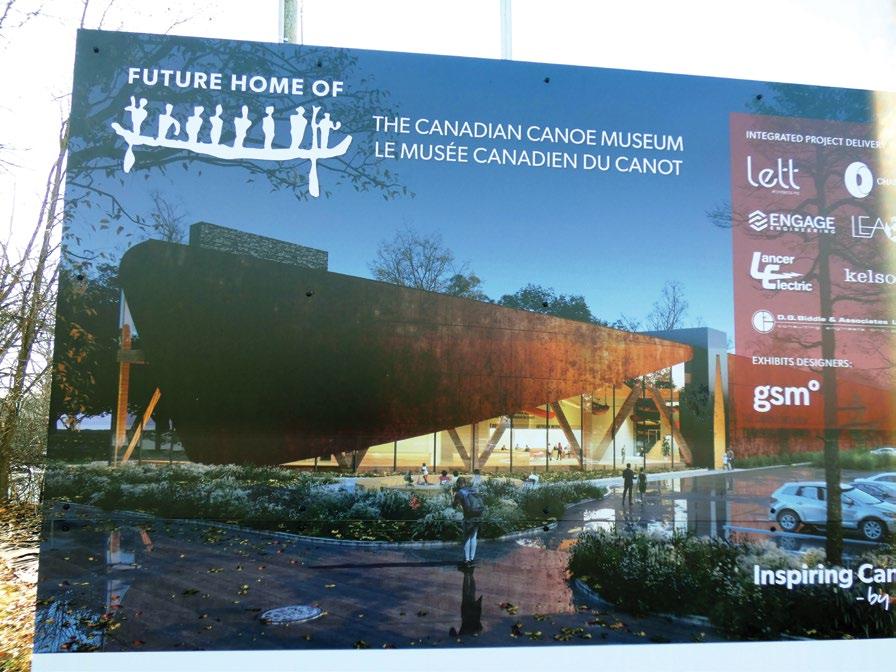

In the city of Peterborough, Ontario, they’re hard at work building a major new building on the Otonabee River. When finished next year, it will house the relocated, expanded Canadian Canoe Museum. We’re going to write about the brand new project in our next issue, but though a little preview was in order.
The Canadian Canoe Museum, located on the Traditional Territory of the Williams Treaties First Nations, in Peterborough, Ontario, has stewarded, for the last 20 years, the world’s largest collection of canoes, kayaks and paddled watercraft. More than 600 in number, the watercraft and their stories have a
pivotal role to play in understanding our past and, our collective future. As part of our responsibility for this one-of-a-kind collection, we are building it a new home along the water’s edge.
In 2013, the Senate declared The Canadian Canoe Museum and its collection a cultural asset of national significance.
The Canadian Canoe Museum’s (CCM) new museum capital campaign was boosted with a $250,000 gift from a local family. The gift celebrates the legacy of the late Shelagh Grant, a 25-
year volunteer and member, and the Grant family’s involvement with the Museum since its inception. The Grant family’s gift will be recognized in the Loft of the new museum, a central community gathering space on the second floor just outside the Knowledge and Research Centre in the Atrium. Grant, who passed away in 2020, is remembered fondly for her love of the
With a world-class collection as a catalyst, The Canadian Canoe Museum inspires connection, curiosity and new understanding. In partnership with individuals, groups and communities — locally, provincially and nationally — we work to experience and explore all that our collection can inspire. This sees students opening their minds in our galleries; community members connecting through artisanry; people of all ages getting on the water and learning to paddle; and exhibitions and events that spark conversation and collaboration.
❯ The Canadian Canoe Museum has more than 600 canoes, kayaks, and paddled watercraft in its collection.
❯ More than 100 canoes and kayaks are on display in the galleries.
❯ In 2013, the Senate of Canada declared The Canadian Canoe Museum and its collection a cultural asset of national significance.
The Canadian Canoe Museum is creating a new cultural destination that will inspire visitors to learn about Canada’s collective history and reinforce our connections to land, water and one another – all through the unique lens of the iconic canoe. Located on a five-acre site at the Little Lake waterfront in Peterborough, the Museum’s new home is expected to open in the summer of 2023.
North and passion for canoeing. Shelagh was an internationally acclaimed expert, historian and author on the Arctic, and with her husband Jon, she paddled many of Canada’s northern rivers together.
“The Grant family honours Shelagh Grant’s love of the North, its land, peoples, rivers, and rapids with this $250,000 gift. Shelagh’s vision and committee work helped to guide The Canadian Canoe Museum in its early stages,” says her husband, Jon Grant. “This gift recognizes the canoe as a unifying legacy, from the First People’s travel to today’s recreation, which is an important part of our rich and unique heritage.”
In the 1980s, through her work as an adjunct professor of Canadian Studies at Trent University, Shelagh became part of an instrumental Advisory Committee that helped establish the CCM and bring Kirk Wipper’s Kanawa canoe collection to Peterborough.
Over the years, Shelagh and her husband Jon Grant, former Chairman and Chief Executive Officer of Quaker Oats Company of Canada Ltd., continued to support the CCM, with Jon also serving on the Museum’s Board of Directors.
“Canadians from coast-to-coast-to-coast are engaged and giving to the campaign — but to see such strong local support here in our community is heartening. Each donation, from $25 to significant gifts like the Grant family’s, is helping to build a new cultural destination on the waterfront that will house our world-class collection and award-winning educational programs all in one place. These donations allow us to continue inspiring Canada by canoe —from right here in Peterborough,” shares Kevin Malone, Campaign Chair.
The CCM has raised 93 percent of the $40 million capital costs for the new museum, which is scheduled to open next summer. The community is invited to donate to the new museum or to support the move of more than 600 canoes and kayaks, and small artefacts.

s we enter the third holiday season since the pandemic began, charities are more at risk than ever before. For many, donations and other forms of revenue are down or flatlining, and service demand has skyrocketed. The staff working in these charities are close to burning out as they manage these trends at work, on top of their own challenges navigating a multi-year pandemic and 40-year high inflation. Successful fundraising during December will be more critical than ever.
When we look at demand, the numbers found in CanadaHelps’ research with Ipsos are startling. Twenty-two percent of Canadians are expecting to rely on charity services to meet basic needs like food and shelter in the next six months. This number increases to 35 percent for the 18-34 age group, and 26 percent for the 25-54 age group. More than a quarter of parents (27 percent) expect to access these essential services. Charities across sub-sectors are also reporting an increase in demand for their services, even those that would fall outside of the “basic needs” category.
New Beginnings Support Program works with low-income and vulnerable women in the areas of career and personal development. Adapting to the pandemic meant having to provide access to laptops for online programming for 50 percent of their clients, renting larger space to accommodate safety protocols, and trying to keep up with the spike in demand for their services and for the care packages they provide, which are filled with grocery and basic need items. Their costs have increased across the board
Ain the past two and a half years, while donations decreased by 75 percent and have not rebounded. The organization is now facing tough decisions: without a boost in funding, they may have to reduce programs and staff, and ask the remaining already overworked staff to do more. The women that New Beginnings support have experienced trauma and violence, and the pandemic has further contributed to poverty, anxiety, depression, and social isolation. Without the organization’s services, these women will be less able to find quality employment and move towards independence and hope.
In other cases, especially in sub-sectors like arts and culture, demand for services may be down, leading to significant funding gaps and a risk they’ll have to close their doors. For example, The School of Toronto Dance Theatre, a fifty-year-old institution, relies heavily on enrollment to its post-secondary program to fund operations. Now into their third school year since the pandemic began, enrollment sits at only fifty percent, and their future — the future of a critical training pipeline fueling the arts sector — is uncertain.
One piece of good news for the charitable sector is the ambivalence that many Canadians are feeling about receiving material gifts this holiday season. Another new Ipsos poll commissioned by CanadaHelps revealed that nearly half of Canadians (47 percent) would prefer to receive a charitable gift such as a Charity Gift Card, eCard, or a donation for a virtual gift instead of a material present this year.
Charities can use this news as an opportunity to tailor their messaging to donors, and create compelling email

and social media storytelling campaigns. For example, by creating a virtual gift or adding a gift guide to their website, charities can share the impact of their work and make it more tangible to both the donor and the gift recipient. Looking at the CanadaHelps Gift Guide, a gift of $15 could buy a chicken through Oxfam Canada, $80 can feed a family of four through Edmonton’s Food Bank, and $250 can cover the cost of a spay or neuter surgery through the Peterborough Humane Society.
Our research also shows that more than a third (35 percent) of Canadians expect to spend less on holiday gifts, and 20 percent of Canadians plan to give less to charity this year. Knowing that budgets are especially tight, fundraisers need to encourage different methods of giving. Promoting the benefit of tax receipts for charitable gifts over traditional gifts can make the expense easier to rationalize, and so too can promoting the benefits of giving smaller amounts monthly. Gifts of securities, which are tax-effective thanks to the elimination of capital gains tax on direct donations, can be a very appealing option for donors and many charities don’t promote this at all.
The strength of charities correlates with the strength of our communities, but the challenges the charitable sector is facing this year will not be easy to overcome. We must do all we can to share this important story, and tap into the generosity of Canadians this holiday season.
JANE RICCIARDELLI is COO & Acting CEO, CanadaHelps. CanadaHelps is Canada’s largest platform for donating and fundraising online. Over the last 22 years, CanadaHelps has raised more than $2.3 billion from more than 3.6 million Canadians.
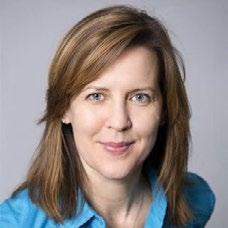

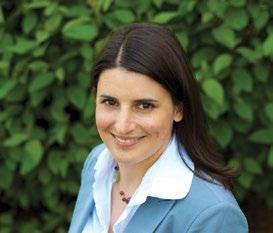
Foundation Magazine partnered with Sage Intacct to have a conversation with a group of leaders of a range of nonprofits and charities to gain insights into the way their organizations, and similar groups across the country, are approaching the finance challenges facing our sector today. We wanted to hear how they are coping, the solutions they turn to, the tactics they employ and the expectations they have for their futures. Many sectors have been rocked and shaken by the pandemic, by the necessary restrictions which kept most of us away from our usual approaches to finding funding, working with donors, providing services to those who rely upon us, and keeping finance healthy. The lifeblood of any organization flows on the strength of its finances and all executives have the finance role, whether in name or by extension. It is incumbent upon them to ensure their fiscal health endures. This report is the result of those conversations and we thank Sage Intacct for making this possible, and we thank the participants for taking the time to share their experiences and their insights. (One participant asked their specific name not be used and we felt that individual’s comments are important to be heard.)
The Participants.
Peter Weizenbluth, CFO, Campfire Circle (formerly Camp Ooch and Camp Trillium).
Lesley Fox, CEO, Furbearers.
Jane Doe, Financial Manager, Community Charity, Western Canada.
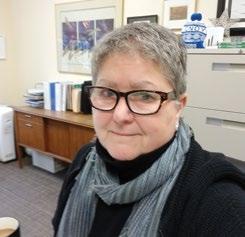
Ellen Frood, Executive Director, Sage Haven Society.
Rob Appleton, Executive Director, Arthritis Research Canada.
Naumana Khan, Director Programs, Humanity First.
Michelle Colero, Executive Director, Bladder Cancer Canada.
Lesley Bayne, Executive Director, The Donkey Sanctuary of Canada.
Richard Morgan, Executive Director, Humanitarian Coalition.
Foundation Magazine (FM): Thank you all for speaking with us about this crucial aspect of your organizations’ future. The pandemic and other strong influences are reshaping some of the ways we think about finance and our organizational structure. This special report is to provide our readers with insights from their peers and we appreciate your willingness to share.
FM: What’s the biggest challenge you face in the short term?
Lesley Fox, CEO, Furbearers: In the short term, we are concerned about the economy and discussions related to inflation, rising costs and a possible recession. Economic instability has the potential to reduce donations, so no doubt all charities are reconsidering their approach to fundraising. The time is now to implement a variety of fundraising strategies that aren’t dependent solely on the same group of donors.
Ellen Frood, Executive Director, Sage Haven Society: Our counseling and outreach programs and services have largely been faceto-face. Through the beginning of COVID we were forced to find ways to deliver services to clients using new technology. Now we continue to look for the balance between remote communications and one-onone. This would be the same with other gender based violence organizations and intimate partner counselling programs. We served a number of people who are or may become un-housed and who live precariously. Finding ways to maintain contact can be very difficult. In come cases we have been able to provide phones but the phones can become legal tender. Our challenge is building trust and good relationships.
Rob Appleton, Executive Director, Arthritis Research Canada: As a charity, the biggest concern is always funds to operate our organization. The current volatility in the world has created inflationary pressures that could impact our funders, donors and certainly our staff. The funders and donors may not be able to assist us at a higher level because of the pressures on their personal situation or organization. The inflationary pressure will impact our staff and we are not guaranteed to be able to address it to the level that they may expect us to. As a charity we are very price sensitive as we try to stretch every dollar future. Since granting agencies do not account for inflation, it will impact all of our finances and will continue to reduce the amount of research per dollar that we are able to conduct.
Jane Doe, Financial Manager, Community Charity, Western Canada: ECE qualified staff in our programs are not eligible for the government’s wage enhancement to those with that qualification working in childcare. If we are not able to provide that we will loose well-qualified staff who need the extra money to address their family budgets. These are people who have been with our organization over 5,10 years with valuable skill sets gained through the provision of professional development. Many other NPOs have to address this as well in the province. Our fundraising has been impacted throughout COVID. As well, our social enterprise thrift store has given away more than we made to families/individuals which are living in poverty over COVID. It is also slow to gain traction as volunteers seem to be hard to find these days.
Naumana Khan, Director Programs, Humanity First: There is definitely a dangerous decline in donations and an increase in the number of clients.

Michelle Colero, Executive Director, Bladder Cancer Canada: As a small grassroots nonprofit, it can be difficult to compete with the advertising spend of larger organizations — nonprofit as well as for-profit organizations. Inflation and a potential for a recession can significantly decrease disposable income, which trickles down to donor support and subsequently risk the programs we can offer to patients.
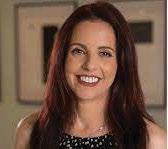
Lesley Bayne, Executive Director, The Donkey Sanctuary of Canada: We are very concerned with what’s going on in the economy right now. Things like inflation and interest rates are impacting a lot of our donors. They are struggling themselves. So, trying to find the money to donate to charities while meeting their own financial needs is really a struggle for some of them. We are finding this

to be quite a challenge. It’s tough, but within this challenge are many other issues. We have a handful of paid staff who do really skilled work.



The biggest challenge we face in the short term is the labour market. The pandemic has upended the traditional employee/employer relationship and we are seeing organizations across industries compete for the same talent. This has forced many to adapt their practices and offerings in order to attract and retain top talent – and those organizations with limited resources are having difficulty competing. Given the increased competition for seasonal staff, we are already recruiting for our summer staff positions, even though our summer programs are more than seven months away. As we look to recover fully from the pandemic, and execute on our strategic growth initiatives, our success is dependent upon having sound recruitment and retention strategies in place. We are a people-first organization, so we view our staff and volunteers as our greatest asset.
We also recognize the challenges that the current economic situation and high inflation pose for us, even in the short term, as we experience the rising costs of goods and services and monitor the impact the economy may have on the giving patterns of our donors and partners.
Richard Morgan, Executive Director, Humanitarian Coalition: The biggest challenges for the Humanitarian Coalition are in some ways common to all charitable organizations: how to raise the resources to deliver the programs compelled by our mission. In our context, only 6-11 percent of Canadian philanthropy is generally directed towards international concerns, yet by any measure, that is where the greatest human needs are found. We are trying to grow awareness of international humanitarian crises through traditional and new media, and also looking to create new collaborative approaches and partnerships to then mobilize resources and deliver aid efficiently, effectively and with the most impact on those most in need in an emergency.
FM: Wondering about the role of technology. There are many challenges in your answers to the first question and it can be tough to navigate for any organization. How do tech trends and society’s escalating adoption of tech affect your own planning?
Fox: The Fur-Bearers regularly relies on technology to amplify our message and to connect with donors. Our primary approach to using technology is to ensure our message and social media channels are updated regularly. We strive for authenticity, engagement and use our many digital tools to acknowledge and thank our supporters. We evaluate the success of our digital communication strategies by tracking a variety of metrics
including website visits, engagement, and number of likes, shares, and follows on social media. For a small organization, we heavily invest in digital communications, partly because it’s affordable and has tremendous reach. Adaptability and flexibility are keys to success, as adopting new technologies may allow us to reach our goals more effectively and efficiently.
Doe: We provide both in person and virtual support to families, this has caused a crunch in staff time as the funders want us to provide direct service, but some of the clients are not ready for in person programs so we are stretched. Adjusting to these trends rapidly make me tired to be honest. It’s been a long haul! I’m also ageing out of work in the next couple years. We ask our IT company to assist in this, they understand charities and our need to budget. We can only do what we can with funding, if we had more, there would be an opportunity to explore this more.
Frood: Yes we do evaluate new technology and our IT person is key to our organization maintaining current software. We have an upgrading list so that we are aware of when technology needs to be replaced so that this can be included in capital planning. I would not say we fall behind, but there are programs we could be taking advantage of, i.e. a contact management system and appointment scheduling.
Appleton: As a research organization, we try to adapt to the evolution of technology. For our studies we have continued to use paper surveys but have added the option of online surveys. The acceptance of these types of technology has improved the effectiveness of our studies and data collection.
On the financial side, we have moved most of our payments away from a cheque in the mail and are using e-transfer and other electronic payment methods. We are not concerned about being the first to adopt these methods, we prefer to take a conservative approach and have them proven before we adopt them.
Khan: We are up to date in the technology as we try to modernize our operations and processes. However, we are unable to fully benefit from the new technologies due to the high cost of implementation.
Colero: Bladder Cancer Canada has always been a virtual organization, and since COVID, patients and caregivers are more comfortable using technology.
We are constantly evaluating technology and the opportunities it may provide. We aim to keep up with the changes in technology but must remain flexible and adaptive due to the limited resources we have as a small nonprofit organization.
Bayne: I look at this two ways: For us, social media is part of
technology but added to this are the platforms we can use to reach our donors. For example, things like being able to do a will on-line instead of going into a lawyer’s office is a big one for us. This is such a different way of doing things and it impacts the way in which we try to reach legacy donors. We no longer advertise through lawyers.
We know that social media has changed the face of giving and we have just recently started up on TikTok while at the same time managing our Facebook and Instagram accounts. We utilize platforms like Razor’s Edge. It’s really changed the way we do things. It’s allowed us to reach more donors because it has a lot more capacity for on-line donating. But a lot of people are really leery of online donating due to the amount of scams that seem to be proliferating everywhere. We receive a lot of feedback from our donors about online scams and we often wonder how we can keep up. For all the great things that technology brings, it also brings some tough questions and challenges for us.
Weizenbluth: Staying relevant from a technology perspective allows us to meet and interact with our stakeholders more effectively, whether they are a donor, a community volunteer or program participant. Charities and NFPs today are faced with a growing need for their services and the use of technology can help them leverage existing resources to meet this increased demand (ie doing more with less) within the community, in a cost-effective way.
Technology offers a way forward for NFPs to amplify their impact in a sustainable way. Whether it be through operational efficiencies or the ability to scale operations, it provides opportunities to help level the playing field across organizations.

I believe organizations that ignore technology risk being left behind as society moves forward. While they may not see the immediate need for change internally, the people they serve and who support their work do expect to engage with the organization in relevant and current ways, so the expectation is there for ongoing adoption. The rate of technological advancement is only accelerating and it’s vital that organizations get comfortable with change as they look to strengthen their operations.
We are always looking at ways to leverage technology to support our mission, whether it be collaborative tools within a hybrid workplace or automation that enables our team to focus on the value-add services that sometimes get sided-tracked due to administrative burden. We have also intentionally invested in technology that directly improves our ability to serve and reach more kids and families across the province.
Morgan: We don’t have a choice but to respond to them. For example, whether one is concerned about cyber fraud, the decline of traditional media, demographic shifts and comfort with technology, we need to adapt. In terms of evaluating new technology, it depends on what you mean. Our donors overwhelmingly give to our humanitarian appeals online. So we assess online giving platforms carefully, we assess carefully how we are spending scarce marketing dollars with Google, Facebook, Twitter, Linked In, etc. In terms of our hardware and software, it’s need driven combined with keeping up with trends and where see most ROI or impact or value.
I would imagine most non profits feel they are falling behind.
We are constantly trying to maximize our program dollars and the public never wants to see us invest in admin or tech, so that’s always constrained.
FM: What are the key factors which influence your long term planning, resources and strategy?

Fox: Investing in your staff, leadership and board of directors is the best thing any organization can do to ensure longterm planning, resources and strategy. This means offering competitive wages, health benefits, generous vacation allowance and other perks including personal days, mental health days and professional development opportunities. For the past few years, we have invested more time and money into the people who make our work possible. Other key factors that influence long-term planning, resources and strategy are our supporters. Creating authentic connections, showing our donors how their support is creating impact, and making it easy for donors to engage with us, is a big consideration in all that we do.
Doe: Our work is best done in person; however we do see the value in providing virtual supports as well. We are having conversations with our major funder regarding the need for this. However it involves more money so limited. We are also at most of the community tables and share local demographics and changing situations for people in our City. Once known, we explore ways in which we can address these needs.
Frood: In our long-term planning we are looking to establish long-term sustainable funding. We do not want to go grant-togrant. In order to facilitate this there is a need to hire a Resource Development person. Of course this takes dollars which, at this time, we do not have. We live in a small community and there are many organizations competing for fundraising dollars. It is very competitive. We need to build a strong case for support and do community education so that we rise as a charity of choice.
Appleton: Currently, our most urgent long-term planning is around the recruitment of the future leaders of our organization. The development of a high quality scientist takes years of education and commitment. We are planning 10 years out in order to recruit more scientists before the eventual retirement wave hits our organization.
I think this issue is a societal issue but what makes our situation unique is the specialization required in an upcoming scientist.
This same concern applies to our administrative staffing. As the work population approaches retirement age, there is a concern that there are not enough future leaders and specialists (nonprofit finance) being developed to take on the current roles.
Khan: The key factors are the amount of donations and the number of volunteers. We need to increase our donor base and
volunteer base.
Colero: Agree about volunteerism: Our dedicated volunteers play a significant role in our programming and patient resources — an increase or decrease impacts our ability to provide support to patients. Reach to the greater population for general awareness of bladder cancer, as well as the resources that Bladder Cancer Canada offers patients, caregivers, and their families.
Bayne: We continue to wonder “How will this financial crisis turn out?” We are trying to do some strategic planning right now but it’s really hard when you don’t know what the next year is going to bring financially. We also wonder how best to plan when there is new technology coming out all the time. The Donkey Sanctuary did in fact do some pretty big planning. Last year, we designed a new addition to our current born along with a 19,000 foot training barn. We are very lucky that we have some extremely loyal donors who are getting us through this time. We are doing the construction right now and we are hoping to finish it sometime in the new year. We also have some really great financial experts on our board along with some excellent contacts. All of these people have been most helpful in trying to foresee what is coming up. But the truth is, that this financial situation has made long term planning exceptionally tough.
Weizenbluth: The key factors that influence our long-term planning, resources and strategy include better understanding the needs of our stakeholders today and in the future; evaluating current reach/impact vs long-term targets; and determining our fundraising capacity, which includes the competition for donor dollars and ability to grow funding sustainably. All of these factors can influence the scope of our operations and the timing of strategic initiatives.
Morgan: We do a multi-year strategic plan that includes a SWOT and landscape exercise and annual work plans. Social and technological trends are unavoidable challenges and opportunities.
FM: Ultimately, the challenges we all face are obstacles we must be able to climb over and survive. What other thoughts do you have about the future? Anything you’d like to share which our readers would find helpful or surprising?
Fox: You may be surprised to learn that some nonprofits and charities still don’t have budgets or strategic plans. This is the first and most just use important step for any organization — have a budget. Understand what money is coming in and where the money is being spent (and on what). This also provides transparency to donors, which is essential in today’s world. Organizations should also have a strong fundraising mix that includes a monthly donor program, legacy giving opportunities, stock transfers, events, and third-party fundraising (like
Facebook birthdays). Taking advantage of all the different ways in which you can raise funds will help ensure a long and prosperous future.
Doe: The need for funders/foundations to understand the need and value of increased administration costs. COVID caused those of us non-front facing staff to take on more tasks “off the sides of our desks” and causing many more hours worked than compensated for. I am noticing that over COVID, we had access to grant opportunities for small amounts (under $20,000) that provided 10 percent to zero percent for administration costs. Our clients needed the services/support and we needed to do the work. It’s time to get over the idea that we work in this field “for the love” of it. I’m actually considering early retirement due to this.
Frood: Remember, most grants are specific to a program. What we need to be able to raise dollars for priority needs so that we can allocate funding where dollars are needed.
Appleton: Developing the future finance coordinators, managers and directors is the key. As I mentioned earlier, I see this being a serious problem as the market tightens for these skills and the nonprofit sector is competing with the private sector for talent. I lost my last Finance Coordinator to a job that paid her two times what I was able to pay her.
Khan: There should be a more robust system to access government grants and donations from large foundations. It is not easy to receive funds despite having a proven track record.
Weizenbluth: If we’ve learnt anything from the pandemic, it’s that we must be better prepared, agile and resilient in the face of uncertainty. In other words, organizations must invest for the next challenge from both an operational and financial risk perspective. Understanding critical vulnerabilities within your organization today and taking action now to address them is key to weathering the next storm and responding to future challenges.
Morgan: I think nonprofits are still facing a significant demographic shift from older generous donors and volunteers passing on and younger generations not necessarily engaged with or loyal to specific organizations rather than the cause overall. The nature of giving is changing and will challenge many non profits. This will also challenge our social fabric, as charities deliver many of their services and social goods we count on as a healthy, vibrant, equitable and sustainable social democracy. Embracing social and technological change is going to be critical.
FM: Thank you all so much for taking the time to speak with us. I’m sure our readers will appreciate the ideas and insights you have shared.
For many organizations, closing the books is an exercise in stamina and endurance. Nonprofit finance leaders often struggle with timeconsuming manual tasks from sifting through a massive Chart of Accounts (CoA) to performing spreadsheet manipulations, consolidations, reconciliations, and information handoffs. For nearly 60 percent, the financial close process takes over a week, delaying access to reliable information vital to mission-critical decision making.
To better understand the close process and help you find ways to accelerate your time to actionable insights, we at Sage Intacct run an annual Close the Books Survey among finance and accounting professionals. Key findings from our 2021 survey reveal that more organizations are inclined to adopt cloud-based financial solutions than ever before. Additionally, our survey shows that cloud-enabled automation becomes a must for growing organizations especially since most accounting teams responsible for closing the books tend to be compact.
Some good news: Nonprofit organizations of all sizes can save on average 36 percent of their time during the month-end close by simply moving away from spreadsheets toward cloud financial management. Cloud financial management software that automates financial close processes allows organizations to keep running lean, even as they grow in size and complexity. Read on to learn five ways your organization can use Sage Intacct nonprofit accounting software to accelerate the financial close and become better equipped to provide strategic guidance to your organization.


How much do manual tasks slow down the financial close process? Our 2021 Close the Books survey revealed that those most impacted by spreadsheet manipulation have closes that are 36 percent longer than those who are only slightly impacted.
The survey also identified other obstacles making a large impact on finance teams during the close including data imports and exports, information hand-offs, reconciliations, and investigating anomalies. The reality is that the time spent on these and other manual tasks often snowballs into lengthy close times and can lead your organization to make decisions based on stale information.
These challenges led Potential Church to search for a modern, cloudbased accounting solution. “Our team was plowing through tons of manual processes, paperwork, and data entry, which was frequently held up by QuickBooks backups or server maintenance…it was clear that we needed a cloud accounting solution to stay ahead of strategic changes that were placing new demands on accounting,” explained Reggie Alexis, controller at Potential Church. After just a six-week implementation, Potential Church slashed monthly close by 50 percent, reduced AP processing by 33 percent, and cut weekly revenue recognition from 5 days to 1 day.



Nonprofits need timely, insightful financial reporting to make datadriven decisions to propel their mission forward. That’s what makes spreadsheet-based reporting so frustrating. It’s time-consuming and error-prone—and it can often take hours or days to track down the latest information or detect trends. Using cloud financial management software emboldens nonprofit finance leaders to use real-time dynamic reports and dashboards when planning for programs, fundraising, staffing, and more based on what’s really happening.
For example, Sage Intacct customer Seattle Indian Health Board uses the efficiencies gained from the software to spend more time on data analysis. In the past, it took the organization up to three days to generate about a dozen quarterly reports to federal funding agencies. They are now completing those reports in about 40 minutes with Sage Intacct time savings of more than 20 hours a quarter.




Faster consolidations generally mean a faster close. But if your organization has multiple legal entities, performing consolidations quickly isn’t easy. That’s why nonprofit organizations need an accounting solution that is equipped to handle the complexities of multi-entity and multi-currency global accounting consolidations, including decentralized payables, inter-entity transactions, and currency conversions. Automating these and other consolidation activities eliminates hours to days of manual work so organizations can close the books 25-70 percent faster.
World Learning operates dozens of active programs around the world. The organization’s complex, multicurrency, multi-entity accounting requirements mean the finance team needs to track revenue and expenses in local currencies for tax reporting, consolidate the books in U.S. dollars, and produce quarterly grant spending reports for funders. Sage Intacct provides a multi-dimensional structure that makes it easy to track multiple currencies and entities and prepare consolidated reporting.

There’s no question that the COVID-19 pandemic has had a major impact on business operations. Our Close the Books survey found that those organizations that were already cloud-based had a leg up when transitioning to a remote close. Cloud-based organizations were also able to improve accessibility to their data and ensure business continuity when experiencing a sudden transition from the in-office close experience to a remote workplace. For example, Nashville Zoo went live on Sage Intacct just weeks before the disruption of pandemic-related shutdowns in early 2020.
Being cloud-based also has additional advantages for Nashville Zoo, with Sage Intacct the organization slashed its monthly close in half, from 10 days to five. The accounting team also boosted their efficiency by 30 percent and now saves thousands of dollars through improved spend analysis.
Making continuous close a reality starts with an intelligent general ledger providing continuous accounting, trust, and insight. Instead of waiting for the close to get prepared financial information, nonprofit organizations can leverage tight integration with other best-in-class solutions to capture and reconcile transactions in real-time and AI-powered functionality like Outlier Detection to monitor and analyze performance throughout the financial period. In our survey, 81 percent of respondents prefer a system that enables a continuous close yet only 6 percent are already using AI to help with their organization’s close.
Is your nonprofit finance team ready to improve efficiency and deliver insights days or even weeks earlier than they ever thought possible? Cloud solutions provide the foundation for automation and AI to transform the close so you can always have a current and accurate view of your organization. With more time on your side, you can focus on strategy and mission achievement. Accelerating the close takes you out of the ledger and keeps you ready for what’s next. To learn more about how to conquer your close, download our eBook, Living on the Ledger.
SPONSORED CONTENT from Sage Intacct Canada



Those working and running foundations have more to accomplish in a day than ever before. They are tasked with fundraising, event planning, evaluating giving options and the oversight of the portfolio. All of this while functioning within a budget and dealing with human resources and other operational issues. Wouldn’t it be a blessing to have the aspects of overseeing a portfolio and the ongoing reporting, decision-making and governance delegated to a trusted third party? What if that opportunity existed and likely at a cost comparable to or below your current cost structure? This article will describe an option to optimize the investment goals of the foundation while affording you with more time on the things that you are passionate about.
Today more than ever, it is important to have independent and aligned investment advice. Foundations that have partnered with an Outsourced Chief Investment Officer (OCIO) have been well served in the past decade, but today we are at an inflection point. The last 10 years can be referred to as the “Goldilocks” era, where we had low interest rates and good economic growthfairly simple portfolios were able to generate strong returns. The next decade will have the drag of higher interest rates and likely muted growth – hence the inflection point.
The OCIO model is much more prevalent in the US than here in Canada, where we have few firms that can tick all the boxes. However, this does not preclude many from marketing themselves as OCIO’s or multi-family offices, which can prove detrimental to both their clients and, over time, the firms themselves. With this in mind, today may be the most important time in decades for foundations and endowments to step back and evaluate their strategy, ensuring they receive the best investment guidance possible and partner with a firm that is fully aligned with them.
Many of the very large foundations, pension plans and family offices have investment employees that execute on their plan. Generally, these are organizations that have investible assets exceeding $500 million. The people working at these entities are directly aligned with their clients’ goals and objectives, and may manage some of the money internally. They often have dedicated research teams to explore and assess external managers for mandates that they do not have the skillset to manage in-house. An OCIO replaces the duties and functions of those investment employees and delivers them to a foundation in a seamless and cost-effective manner.
This is why it is so important to clarify what an OCIO actually is and isn’t. Allow me to go through a checklist of key attributes:
❯ OCIO’s are conflict-free. Investment solutions are managed exclusively by external parties. Using in-house products creates a conflict and as a result will often exclude banks and boutique firms. OCIO’s are only paid by their client and receive no referral or third-party fees. This eliminates any bias and ensures alignment with the client’s goals and objectives. In our view, this is the best framework
for creating a portfolio of best-of-breed managers and appropriate portfolio construction.
❯ OCIO’s are investors first. The culture is rooted in research, portfolio construction and decision-making. Their people are investment professionals with a pedigree in broad and diverse investment classes. They are often credentialed (generally Chartered Financial Analysts) and they must meet regulatory standards - integrity, code of conduct and proficiency requirements. While a true OCIO, along with its people, are registered with the securities regulators, this is often not the case with a consultant.
❯ OCIO’s have research and service as their cornerstone. The research team is accomplished and has a mandate to evaluate and continually assess investment solutions locally and globally. The investment they make is in people, practices and processes, leading to the construction of robust, resilient portfolios. Seasoned relationship managers are dedicated to each client for guidance and discussion that is continuous and coordinated.
❯ OCIO’s have purchasing power Fees are top of mind for everyone and having scale allows for the negotiation of optimal pricing and terms. All fee discounts and rebates go directly to the benefit of the client. Investment minimums are often lower and include preferential terms. As an aside, an OCIO with scale also affords it the opportunity to attract and retain top talent.
❯ OCIO’s will have valuable intangibles beyond investments. Given their knowledge in the space, they will have relationships with industry experts in accounting, legal, insurance and custody providers that can benefit the foundation. Experience in the foundation space will also allow for advice on board governance and succession, board education and regulator awareness.
Leadership in the foundation space is generally occupied by a very talented group. They have a genuine passion for the cause, for raising funds and for deploying the portfolio for the good of society. These significant talents aside, more often than not, leadership and their team do not have a strong background in investment strategy and management – because of this, OCIO’s can provide significant value. In other cases where knowledge and experience does exist, the presence of an OCIO preserves the independence, in fact and appearance, of leadership and the Board.
There are many compelling reasons for foundations large and small to consider working with an OCIO. When reviewing a firm, make sure it ticks all the boxes.
ANTHONY MESSINA, President, Guardian Partners Inc. and Head of Private Wealth, Guardian Capital Group Limited. Guardian is a prominent, independent outsourced CIO and multi-family office. Guardian Partners manages assets approaching $4 billion and has been working for 25 years with many of Canada’s wealthiest individuals, families and institutional clients that include public and private foundations, endowments and pension plans. The information provided is for illustrative/educational purposes only.

These economic behaviours, by both employers and employees influence our philanthropic activities. Individual discretionary charitable giving has evolved from a sense of obligation, to a purposeful way of giving, for greater impact. Corporate giving is now turning to trust-based philanthropy, also referred to as “stakeholder philanthropy”. Now, the focus is on building strong ties founded in true partnerships that include diverse groups of stakeholders in granting decisions, rather than asking grantees to cater to corporate charitable requirements.
Our very own “way of life” in the charitable sector has also been affected. I am making reference to the alteration of our own collection of beliefs and ideas about what philanthropy should be. In the last two years, the narrative to fundraise had to re-invent itself to survive. This is how raising funds for affordable housing morphed from the perception of housing as a commodity (a real estate value), to housing as a human right (the value to human beings to have a decent place to live).
Sean Gibbons, head of Washington,
D.C. based The Communications Network states that “we’re very fortunate to be living in this really extraordinary time where information has become the most important currency on the planet”. The currency he refers to is not just an attempt to communicate to broadcast out, but rather, this currency can be used to truly communicate, listen, and find ways to engage.
Whitney MacLean also mentioned behavioural changes when trying to engage volunteers (Foundation Magazine, May/June 2022 issue). Whitney talked about the biggest impact this global pandemic has had in her professional life, and to quote her own words: “we had to throw out the rule book”. According to her, the most important thing is to get to know your volunteer. We need to be creative in building relationships to further engage individuals within the charitable sector. If we embrace the need for “a new rule book”, I believe we can embrace change in a positive way — just as Whitney did.
Maybe this global pandemic has enabled us to pause and re-write some of the ways we operate in the charitable sector. Pivoting, hybrid, new rules of engagement, enduring cuts, and even purposeful communications have now shaped the way we do philanthropic work.
If philanthropy means — “the desire to promote the welfare of others, expressed

Foundation Magazine is the Canadian bi-monthly publication and media channel which reaches more than 25,000 individual executives in Canada who represent the full charity and foundation sector and the major donor community, as well as the spectrum of companies which support, supply to, and advise all aspects of the not-for-pro t industry.
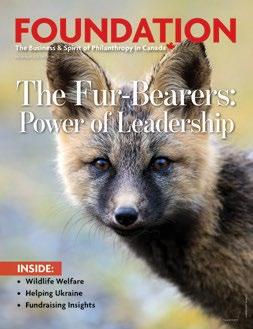
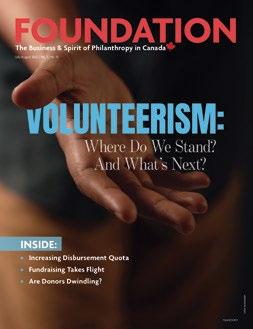
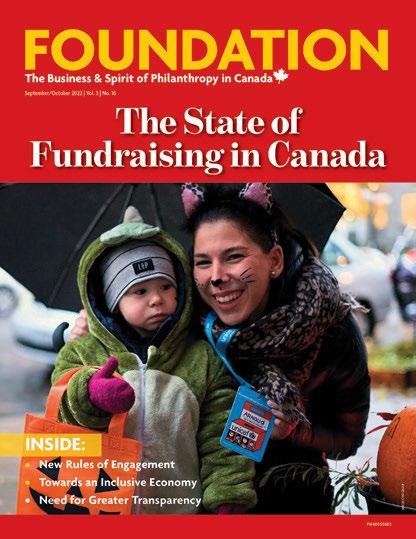
Foundation Magazine is a Lloydmedia, Inc publication. Lloydmedia also publishes DM Magazine and Total Finance Magazine.

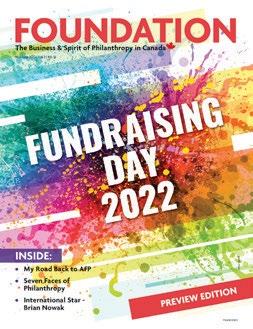



by generous donations towards specific causes” — can we then use the current new paradigm to raise awareness and affect people’s beliefs and actions on critical social, professional, or personal issues? By definition, a paradigm is a frame of reference that affects how we see and experience a situation. Hence this new paradigm can contribute to developing counter-narratives that can change mindsets, and conversations, and fuel action. We have all observed new narratives gain traction or shift focus by sheer repetition amongst media, decisionmakers, and the public over the years.
The time is now. A new paradigm is providing us with the opportunity to “change the book of rules” and take different approaches in our profession, as well as in our philanthropic relationships.
Carpe DiemKATHLEEN A. PROVOST, CFRE is currently the Director, Campaign Initiatives at St. Francis Xavier University, in Antigonish, NS. She brings over 25 years of fundraising experience within the charitable sector. She has been a Certified Fundraising Executive (CFRE) since 2007, and a long-time member and volunteer for the Association of Fundraising Professionals (AFP). As a recognized leader, Kathleen has tailored presentations and workshops for French and English audiences at various events including AFP-Nova Scotia, AFP-Ottawa, AFP-National Congress, Coady International Institute and the Canadian Council for the Advancement of Education. Kathleen is a McGill University graduate and holds a Master, Adult Education from St. Francis Xavier University. She has received numerous recognitions during her career, including the Queen Elizabeth II Diamond Jubilee Medal for her contributions to the charitable sector and 2021 Fundraiser of the Year in Nova Scotia. She writes this column exclusively for each issue of Foundation Magazine.
5Let’s stop publicly ridiculing by naming and shaming. Not donors, not foundations not colleagues.
This is a tricky one. Don’t get me wrong. I don’t want sexual predators to go unnamed. I’d also like to call out a few workplace bullies. Unfortunately, the misuse of non-disclosure agreements means that leaders who break the law will be protected, and their victims will continue to suffer and relive their trauma. However, I’ve watched too many people I know and respect, be called all manner of nasty things particularly on social media. I’ve watched leaders in our sector take joy in being blocked by other leaders. I’ve seen the silly memes that seek to belittle another. I’ve done it myself and when it was pointed out, I did better. Let’s all do better.
5bLet’s

6Let’s stop cancelling each other.
The first time I was cancelled it was brought to my attention that being cancelled is a sign you are doing something right. It is a sign that you are having an impact. When I complained that it was really hard to be cancelled and that at my age, it was akin to being told I’m irrelevant and no longer needed. I was told: You can do hard things. (Thanks, Glennon Doyle.)
7Let’s remember there is a difference between being kind and being nice.
This is simple. When someone has confidence, self-assuredness, selfrespect and self-compassion — they can come across as mean because they won’t let others walk all over them. They won’t stand by when they or someone else is
being disrespected, bullied or excluded. This does not make them unkind even if they handle it in a way you think isn’t ‘nice.’ (See #2, page 15.)
8Let’s stop judging others using ourselves as the benchmark.
We all do this. But let’s try something else. Let’s use curiosity as our guide.
I thought about this when talking to a friend about another friend who is thinking about bringing a second dog into their home. Oh, we had a thing or two to say about that. Not directly to our friend of course.
“They hardly have time to take care of the one they have.” “Are they nuts, they are always complaining they can’t make ends meet — do they have any idea how much a second dog might cost?” “I don’t think they’ve really thought this out.” We had a ride on the carousel of judgement and boy did we go round and round. Our bad.
At no point did we wonder, why? We were not curious about their thinking we were just sure we were right. It is easy to spiral, and to judge. Far less easy to care,
wonder, and engage.
As the year ends and I celebrate the one-year anniversary of being a published author, I am grateful for incredible friends, colleagues and family. I am grateful for opportunities — like the one provided by my book publisher Jim Hilborn and the publisher of Foundation Magazine Steve Lloyd. I am grateful for meaningful work and brilliant clients. I am grateful for you. Thank you for taking the time to read and engage. Without you, there is no me. Sawa Bona. I see you.
MARYANN KERR is Chief Happiness Officer, CEO and principal consultant with the Medalist Group. Maryann is a governance, leadership and culture specialist, has worked in the social profit sector for 34 years and helped raise over $110M. She is an associate consultant with Global Philanthropic Canada. Maryann is a sector leader with a passion for her social justice, feminism, and continuous learning.
Maryann’s first book was published by Civil Sector Press in 2021: Tarnished: Let’s rethink, reimagine and co-create a new social impact sector. Maryann earned her CFRE in 1997 and her master’s in organizational leadership in 2016. She is currently exploring opportunities for a Ph.D. or perhaps a second book. She writes this column exclusively for each issue of Foundation Magazine.

Villanueva, Edgar. Berrett-Kohler. 2018. Decolonizing Wealth, Indigenous wisdom to heal divides and restore balance. Gassame Asare, Janice. Forbes, September, 2022. What Is White Saviorism And How Does It Show Up In Your Workplace?
O ering professional prospect research, training, and fundraising strategy. Editor and contributor to “Prospect Research in Canada”, Canada’s first book on prospect research.

stop the misuse of NDA’s.
Your donors really don’t care about your fundraising goals. But they care — a lot — about your mission. Fundraising goals are important — inside. But donors care about your mission. If you’re fundraising, you already know that. But is that reflected in how you ask for gifts?
Time and again, I see it: internal fundraising goals, how hard the staff is working, paragraph upon paragraph explaining how good the organization is at their work.
Your donors? They’re already there. They assume you work hard. They know you need to raise money to fund that work. And, most important of all, they trust your organization.
So why aren’t you talking with them — in all your communications — about your mission? About the people, communities, animals, or environment you’re there to serve — and how a gift will help?
What’s getting in your way? Here are some potential roadblocks to better fundraising.
Your organization’s “voice” as declared by non-fundraisers focuses only on happy stories There’s so much room in your fundraising communications for happy stories! Newsletters can be full of them. And donors deserve to hear good news. But you cannot avoid talking about the problem your organization is there to solve — or at least, help.
Appeals are where you describe the problem. And if it’s a truly serious problem, worthy of serious donations, you have to show donors as well as tell them. And yes, it’s hard. I expect to cry
ISTOCK/ SCAR1984as I write appeals. Because I feel the pain I’m describing.
And that’s what you want your donors to do, as well. Not to torture them. Not to exploit any beneficiaries. But to reach their hearts. And to explain that there’s a real problem… and they have the power to help.
We like to help. Helping makes us feel good. Don’t deny your donors that chance.
You’re buried in your fundraising goals Maybe you feel like your job depends on meeting them. (There are far too many variables for that!)
Or maybe you’re already connecting “fundraising goals” and “problem solved” in your head. After all, this is your day-today life, right? You totally get it!
But donors have their own jobs and causes. And their own deadlines and worries. How you do your job shouldn’t be another concern to them.
So, fundraising staff: set your own goals. (And not based solely on the expense side of the budget!) Set them wisely — a little stretch, something to work hard for. But make them reachable.
Then translate that into your mission for your donors. Telling donors you need to raise $250,000 this month doesn’t explain the problem. You need to raise that amount because a new, life-saving piece of equipment costs $250,000. And if they can help, your organization will be able to buy it and put it right to work, in your community.
You’ve read that telling real stories — hard to tell stories — is “poverty porn” or the like Covering over bad situations isn’t going to help. Avoiding reality isn’t going to help. And fundraiser, we’re in the reality business in a big way. People are hurting. Animals are being killed. And the climate crisis is real, friends.
But if you’re telling a personal story, you MUST treat that person with respect and consideration. And you share nothing they’re not comfortable with. You give them the power to veto sharing and find a new story if necessary. Their privacy and comfort are paramount!
Your job is to connect donors to mission There’s a world of pain out there. And you, along with your donors, are part of healing it. But like a doctor can’t fix what she can’t diagnose, your donor can’t help when she doesn’t know how badly help is needed.
Be honest. Be real. Be full of empathy and respect — for anyone whose story you tell and for the people who’ll read that story.
MARY CAHANE is a fundraising specialist, consultant and advisor.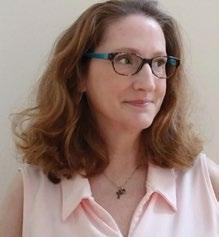

An outstanding example of Greek revival architecture, modified in the Palladian manner, it was begun about 1847 by P.M. Grover, a well-to-do local merchant. A rate type of building in Ontario, the square pillars are a classical Greek feature popular in North America principally because they were less costly to build than round columns. Robert Nicholls acquired the property in 1851 and it remained in his family until 1906. The Nicholls were distinguished in Peterborough for public service and philanthropy. In 1853 Robert Nicholls, a wealthy merchant, and his wife Charlotte Jane moved in and added the two side wings and front porch.
After Robert’s death in 1883, Charlotte Jane Nicholls, now a wealthy widow, became Peterborough’s most well-known benefactor at the time. Her financial position allowed her to devote much of her time and money to the welfare of the city. In 1885 she gave more funding to the city for a Protestant hospital in memory of her husband. In 1889 she expanded the now-inadequate facility by paying for a 50-bed hospital on Argyle Street. The Nicholls Hospital was expanded twice after she died and was the forerunner of today’s civic hospital. She contributed both during her life and through her will to the YMCA, the Presbyterian Church, many charities and numerous educational institutes. The name Nicholls will be long-remembered in Peterborough, both because the benefactions of Robert and Charlotte Jane exceeded all others, and because their home remains one of the principal architectural landmarks in the province. Charlotte Jane Nicholls lived in the house until her death in 1890
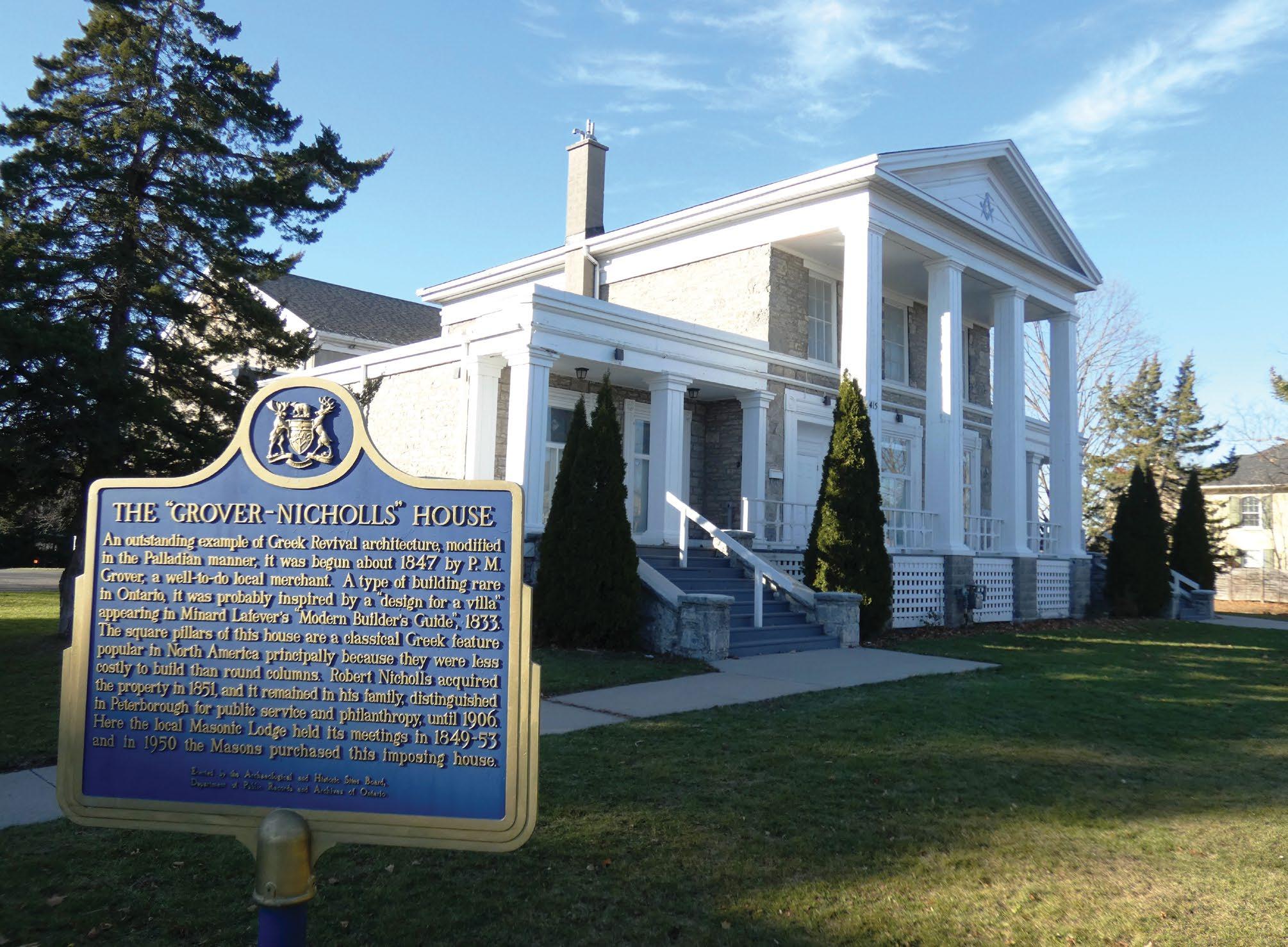
Each issue Foundation Magazine provides a mini-profile of five people whose work and commitment make Canada a more liveable country. We thank them for their service.

Margaret Acreman founded the Single Parent Association of Newfoundland in September of 1987, based on her own experience as a single parent and her work in crisis intervention in the service community. She recognized that there were many gaps in available services and little awareness of the issues facing single parent families. Margaret undertook the daunting task of trying to provide both necessary ongoing supports for single parents and advocating on their behalf in the public sector. With a small group of dedicated volunteers, Margaret worked to make her vision a reality. SPAN was incorporated in October of 1989 and received charitable status in January 1991. As of 2022, there are on average 26,000 single parent families in the province. Pressures on the family unit are increasing in today’s world, and the single parent, as sole earner, with no partner to share these stresses, is under almost unbearable strain.
The Raincoast Education Society, based in Tofino, B.C., welcomed research intern Jen Willoughby thanks to the Direct Action Program through Ocean Wise. This program provides learning and professional mentorship with aquatic conservation efforts across Canada through 3-month internships with partner organizations. Willoughby gets to explore Clayoquot and Barkley Sound. Water, nature, and animals have always been a central part of her life. Since childhood she has always gravitated to spending time outdoors. These passions and a love for travel have brought her all over the world, including Thailand, South Africa, Indonesia and Costa Rica. She completed an Honours degree in Zoology from the University of Guelph. After graduating she began working as a zookeeper caring for exotic animals such as large parrots and also delivering educational programming to school groups and the general public.
Bryan Rose is Executive Director of the Niagara Community Foundation and is passionate about philanthropy, having fostered a deep and broad spectrum of experience during his 20+ years in the charitable sector. A life-long resident of Niagara, Rose has deep roots in the community, with a strong network of professional contacts and personal connections across the region and beyond. He is a skilled team leader who believes in building enduring, genuine relationships rooted in personal integrity and a shared spirit of philanthropy. His professional journey began at his alma mater, Ridley College, in a number of roles including Acting Director of Development and also spent two years as a Senior Development Officer (Major Gifts & Capital Campaign) with the Mohawk College Foundation. Bryan and his wife Andrea live in Beamsville with their daughter and son.
Based in Kingston, Ontario, Syvlio Roy is the most recent Distinguished Volunteer Pilot of the Year Award (2021) for Hope Air, Canada’s only national charity that provides free travel and accommodations for Canadians in financial need. The first flight was in 1986, and more than 162,000 travel arrangements have been made since. “I flew a young woman from Sault Ste Marie, Ontario, to London, Ontario. It would have been a nine-and-a-half-hour drive one-way, but the flight was only two hours. We were about 30 minutes from landing when she quietly said, ‘I’m not sure if this ok, but I don’t want this flight to end. This has been the best day of my life.’ I helped her experience something other than her illness for a short time. This is why I volunteer,” said Roy. The Spirit of Hope Awards recognizes donors and volunteers who have made extraordinary contributions to the charity.
Well-known local Okanagan entrepreneur Lane Merrifield has once again made a contribution back into the Kelowna community. The Dragon Den star’s Merrifield Family Foundation donated $100,000 to the Our Students, Your Health campaign for a modern Health Sciences Centre on Okanagan College’s Kelowna campus. Merrifield is one of Canada’s leading tech entrepreneurs. He is the founder of Club Penguin, the largest children’s online social network. At age 28, he sold it to Disney for $350 million, and, as their youngest executive vice president, turned it into a billion-dollar brand. Merrifield, who was named an Okanagan College Honorary Fellow in 2012, the school’s highest honour, said he values OC’s focus on applied learning where students engage directly in hands-on skills to master their craft. The Merrifield Family Foundation and credited the gift as helping the OC Foundation hit its current milestone of $4.25 million raised from the community to complete the Health Sciences Centre.












Our magazines are must-reads for key executives in core corporate competencies.
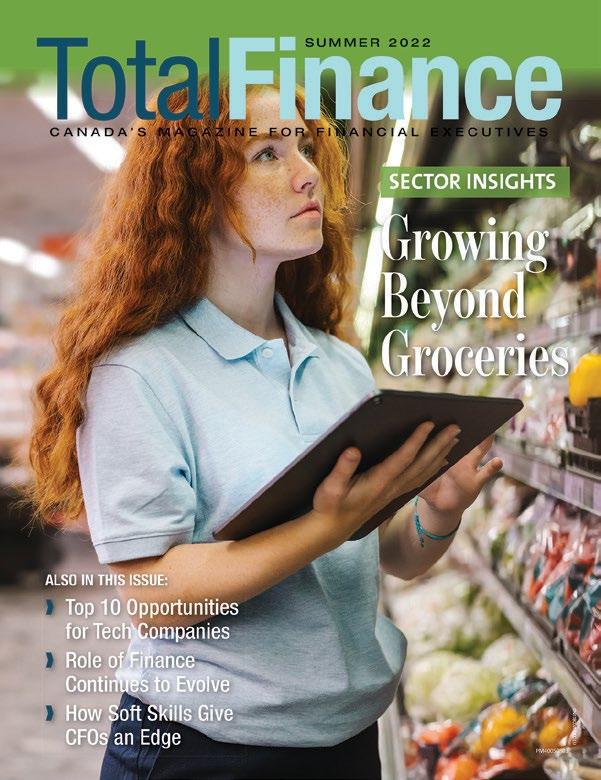
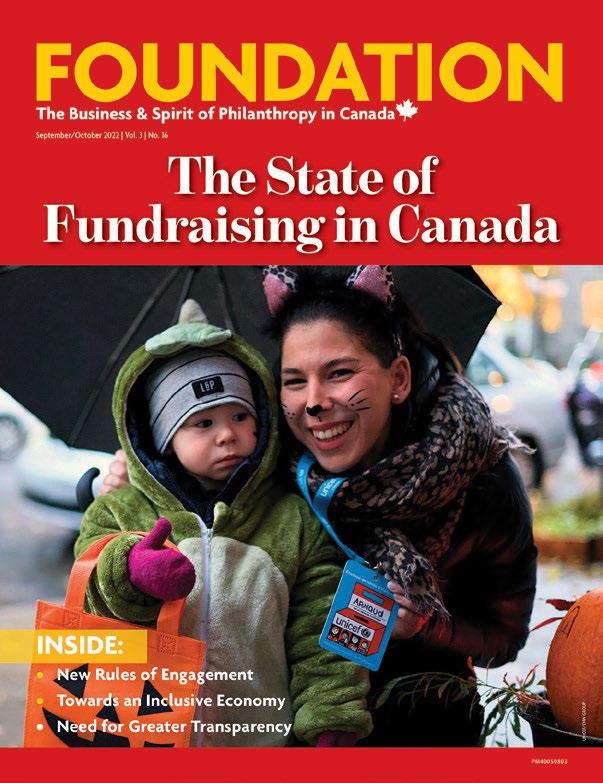
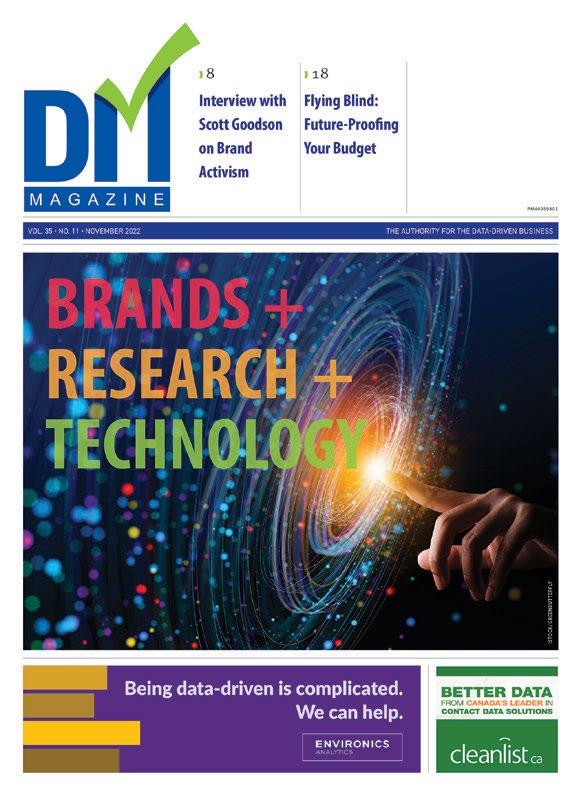














ecosystem to ensure capital and cash flow keep their engines running?
• Determine who their customers should be, how they can reach them most effectively, and how they can turn data-driven marketing into profitable sales? and billings between their companies and their customers and vendors?
• Convert all the data and information they collect from every contact point into tangible benefits that increase revenue and reduce costs?



• Equip their companies with the tools, technology, systems and hardware needed to manage their operations, to create new services or products, and deliver them to their market?
• Manage their customers with smoothly functioning support departments that are properly staffed and equipped to solve problems, foster loyalty and retain customers?
• Make any or every step in that chain better, faster, cheaper, and more profitable?




